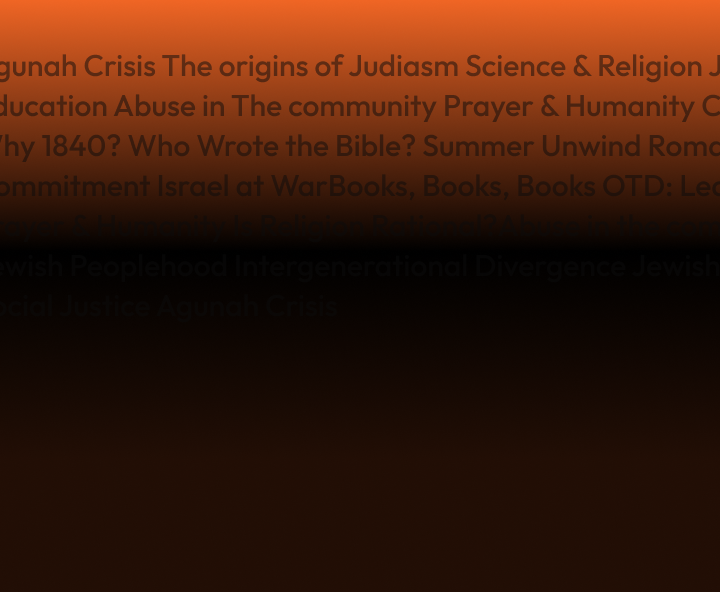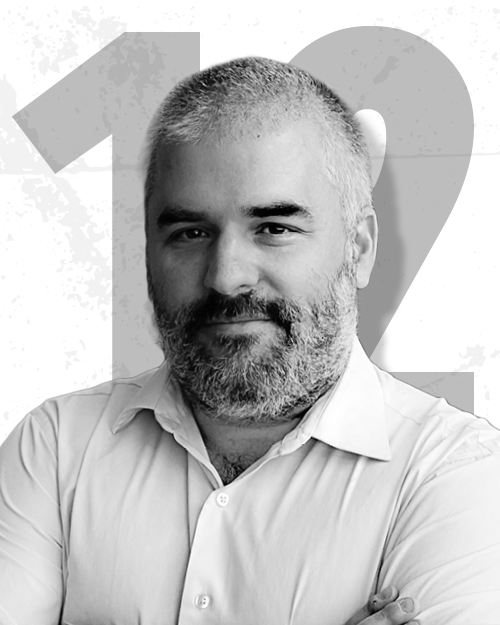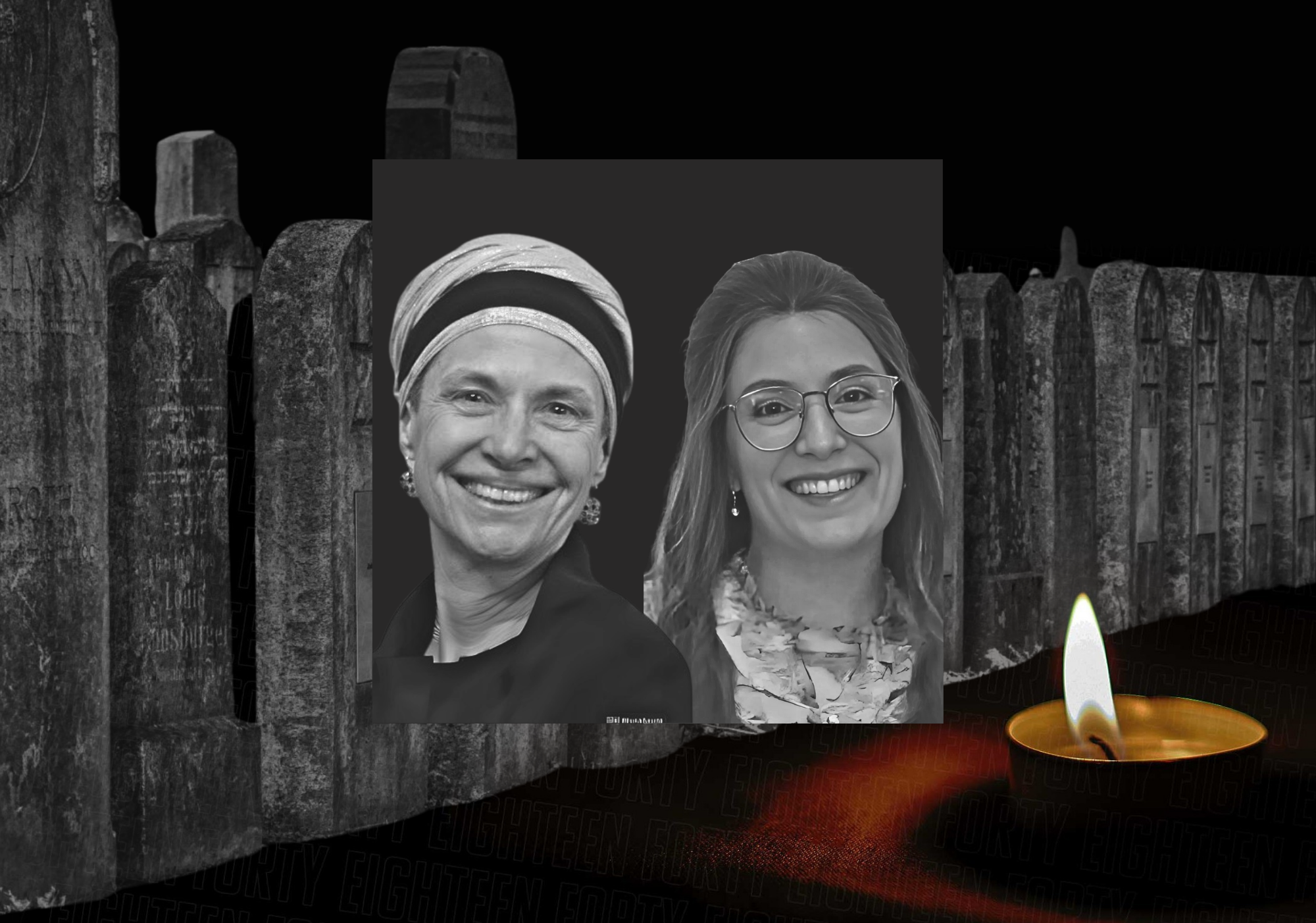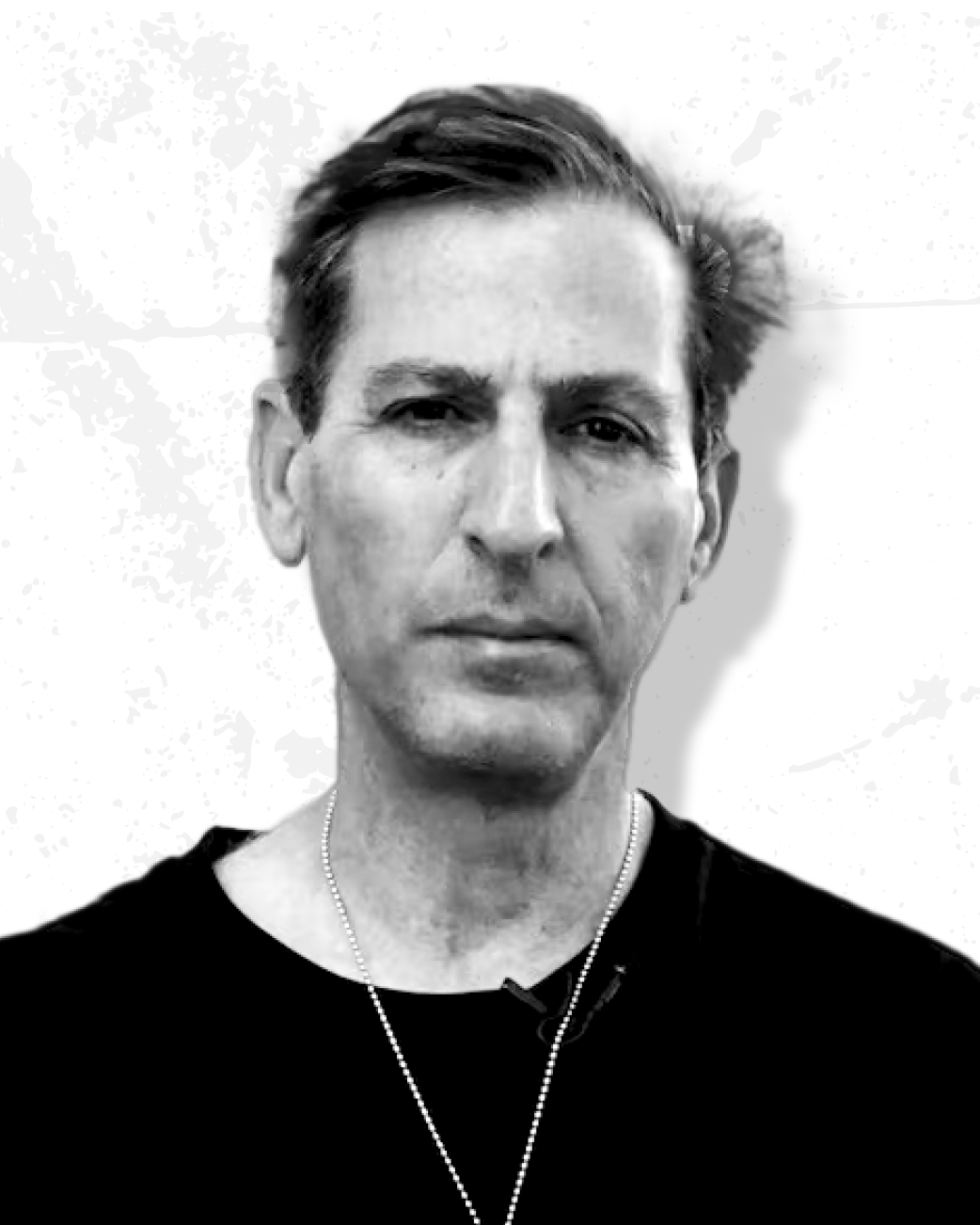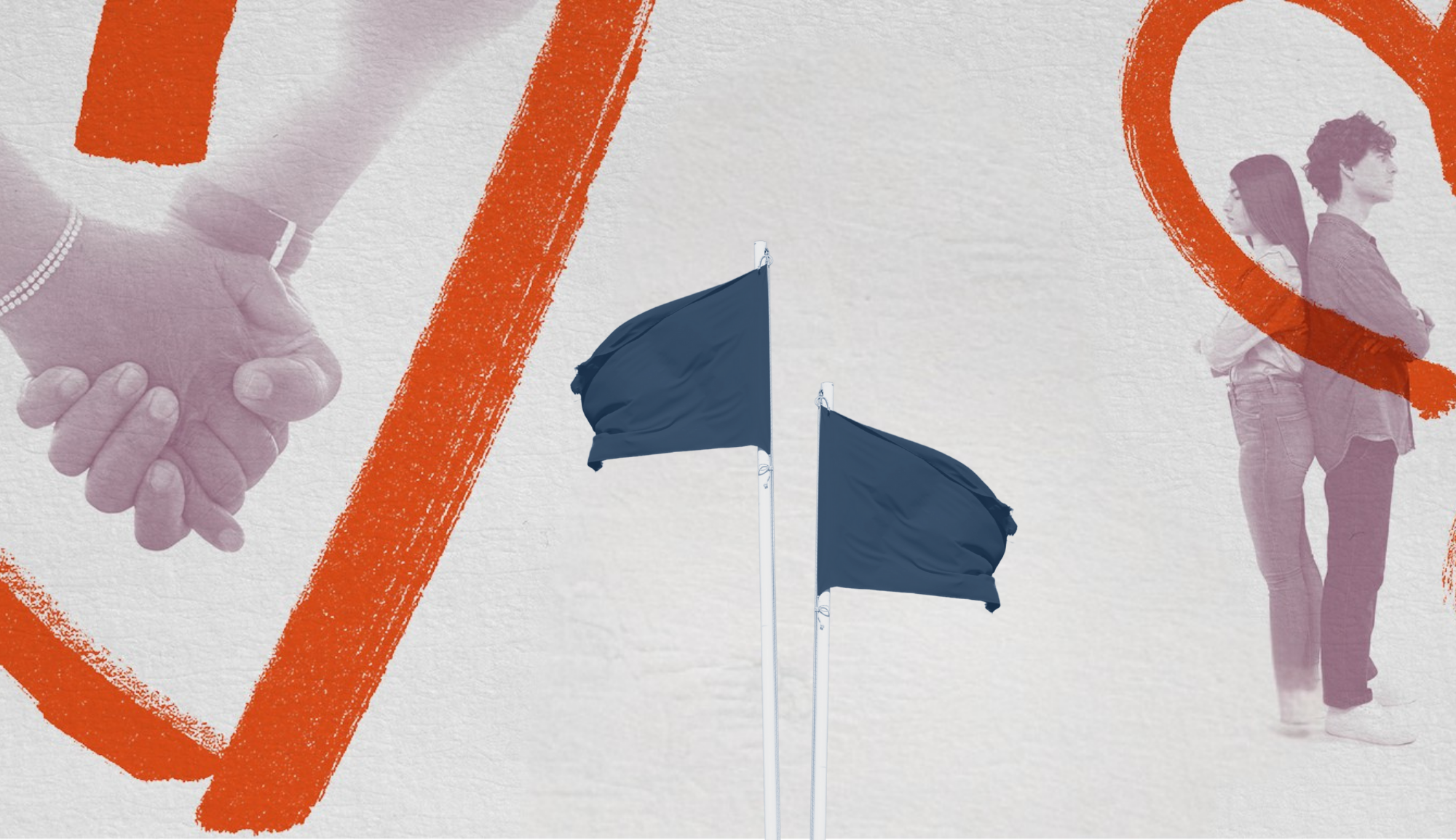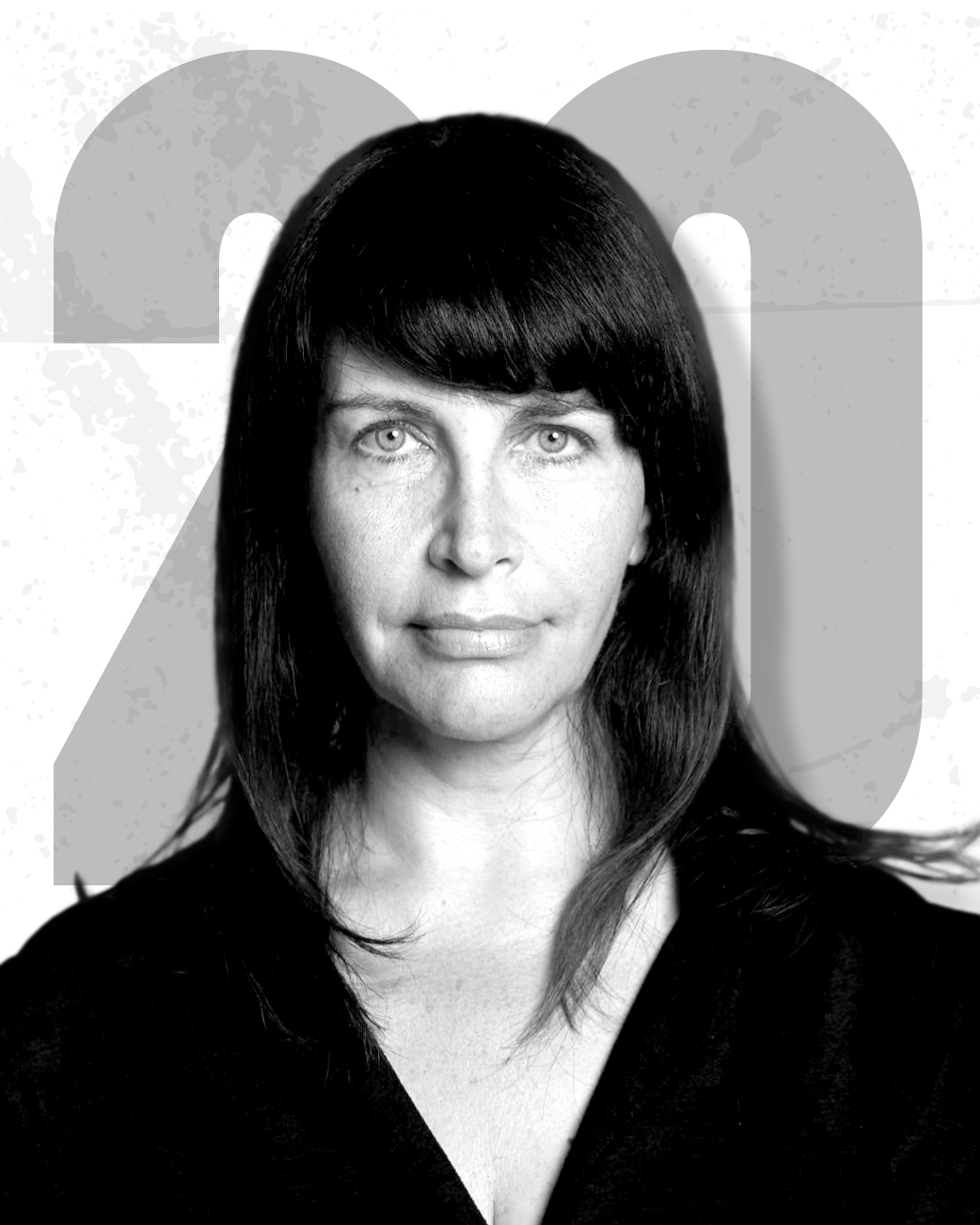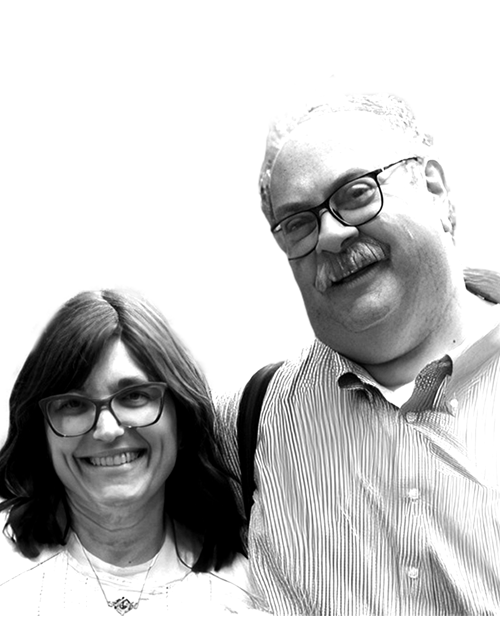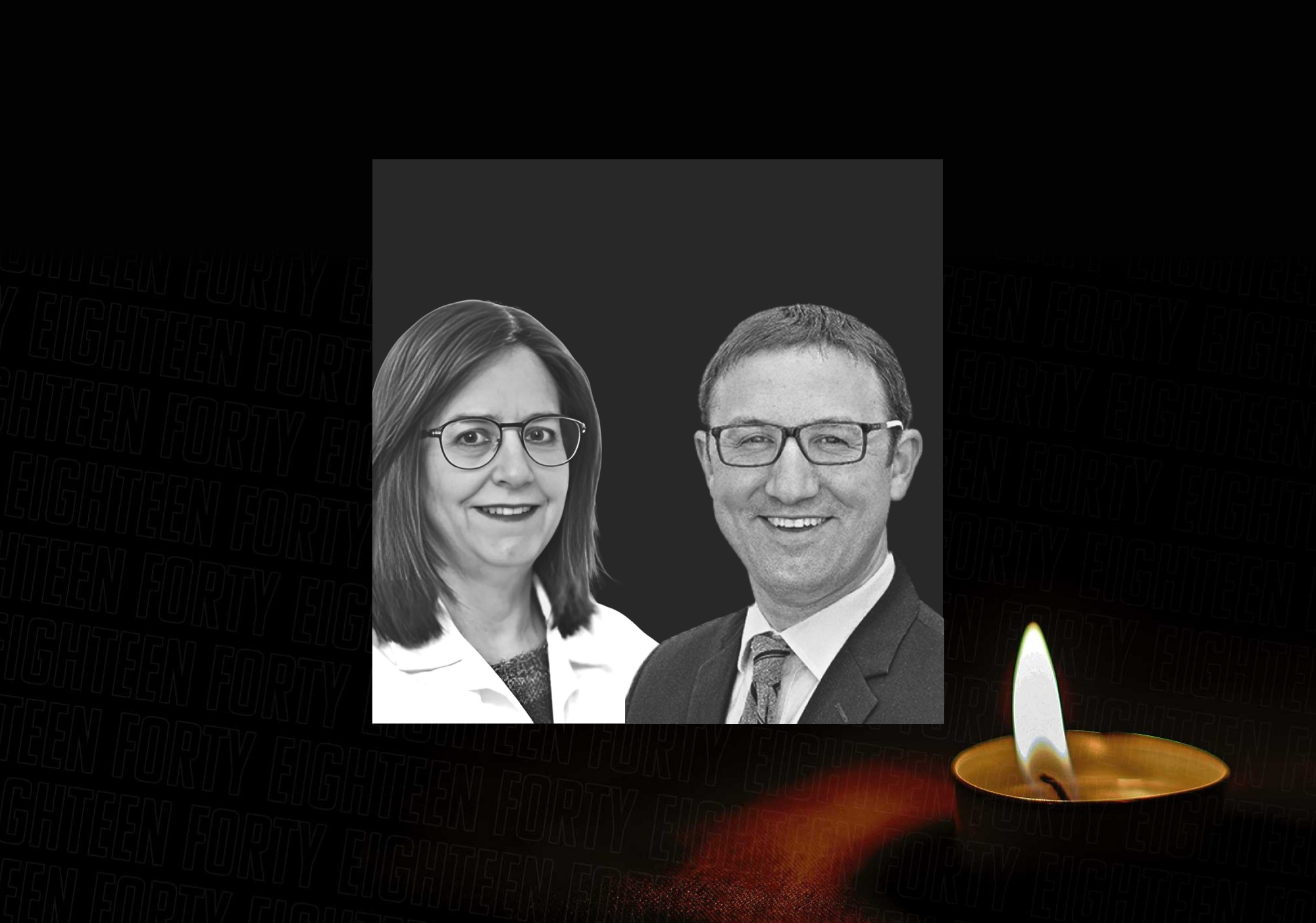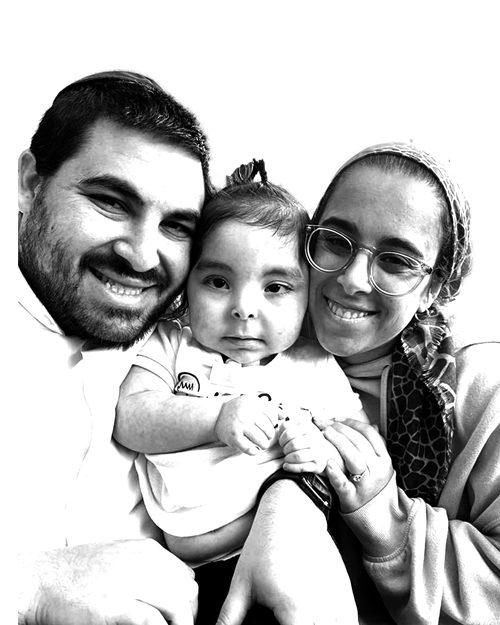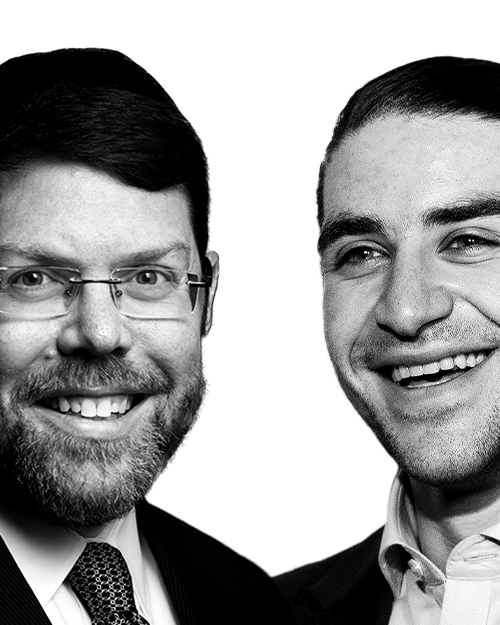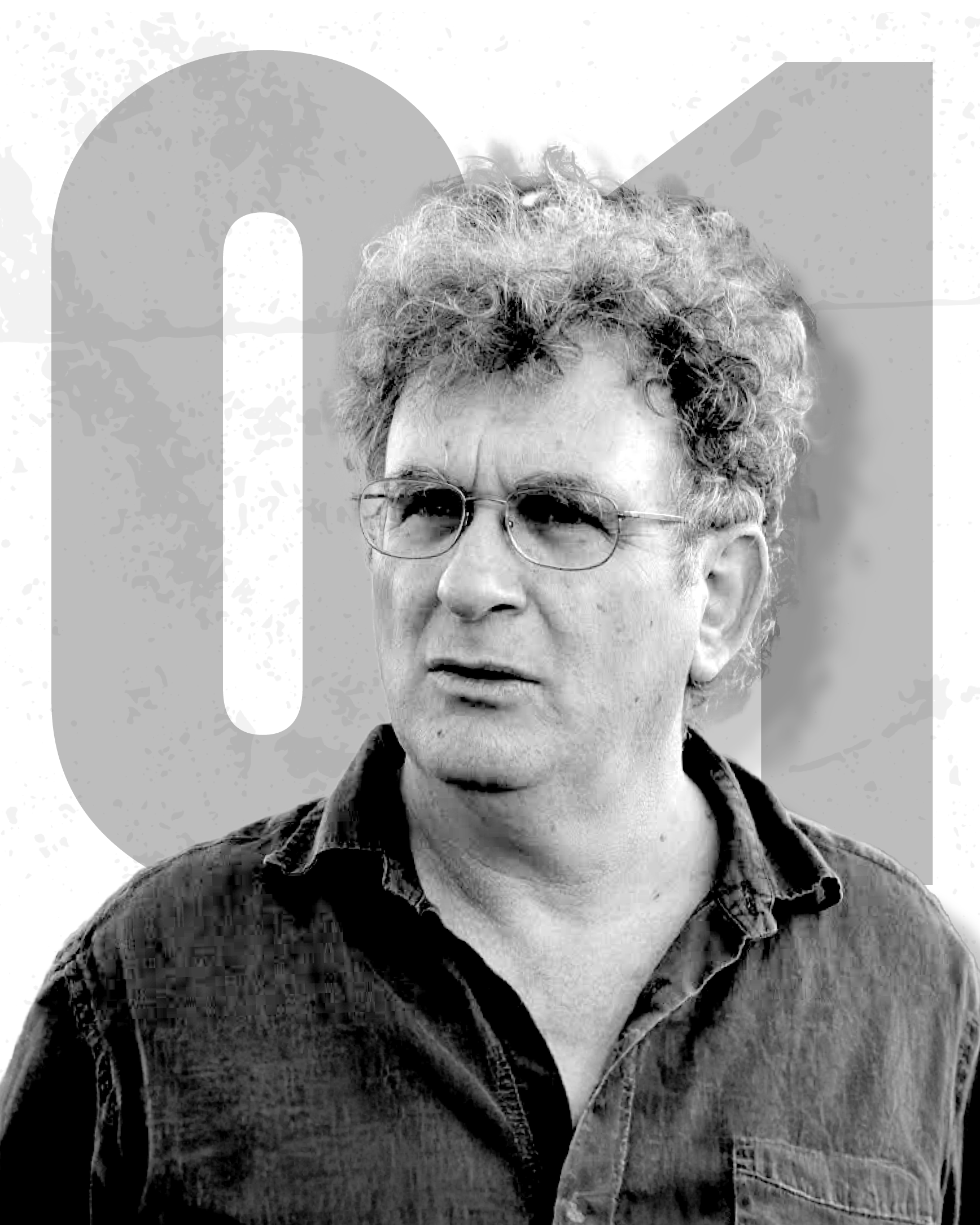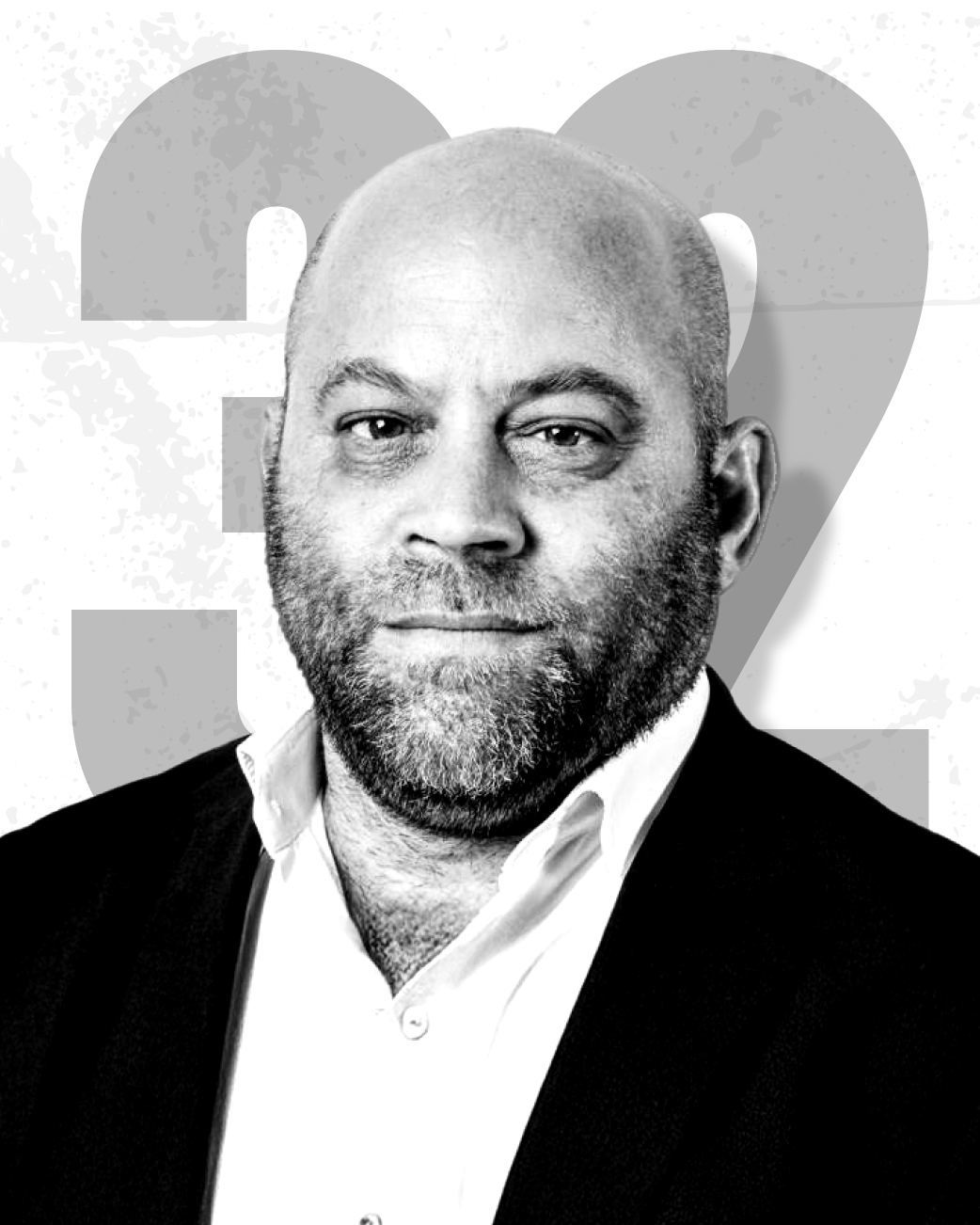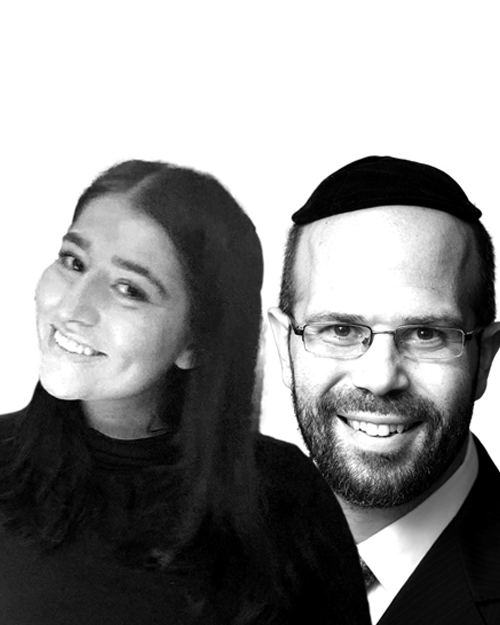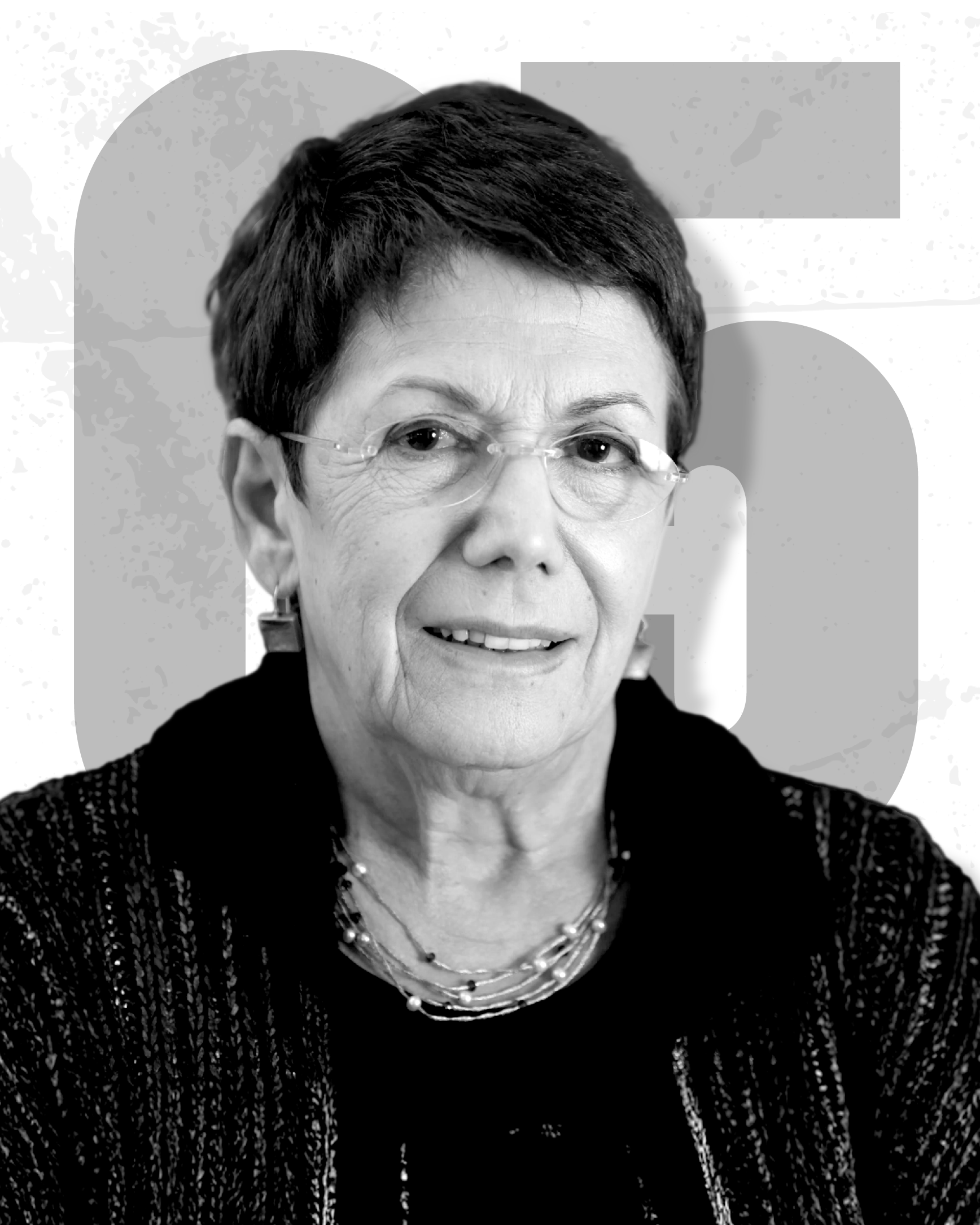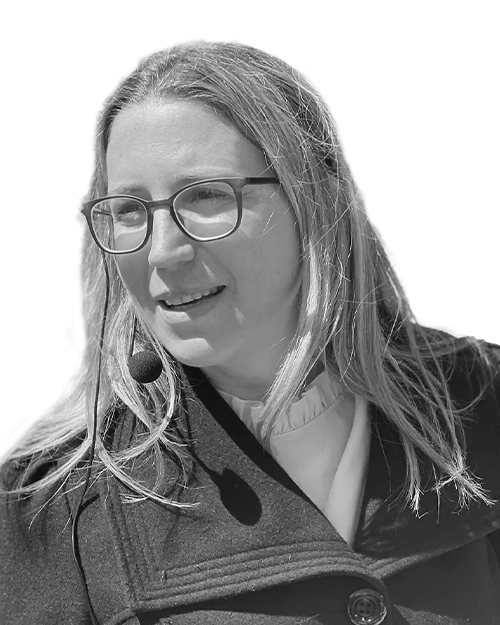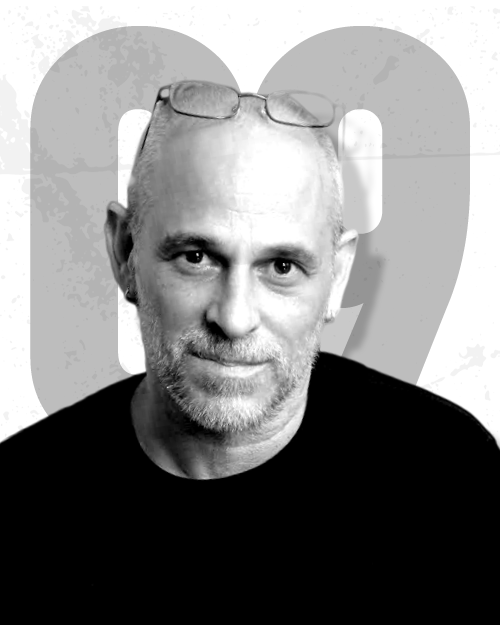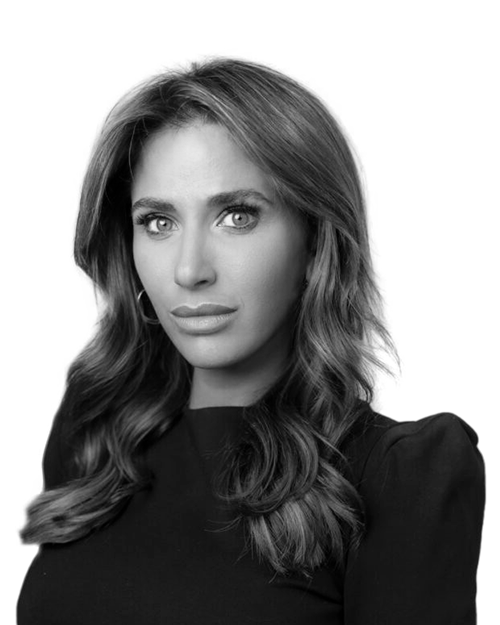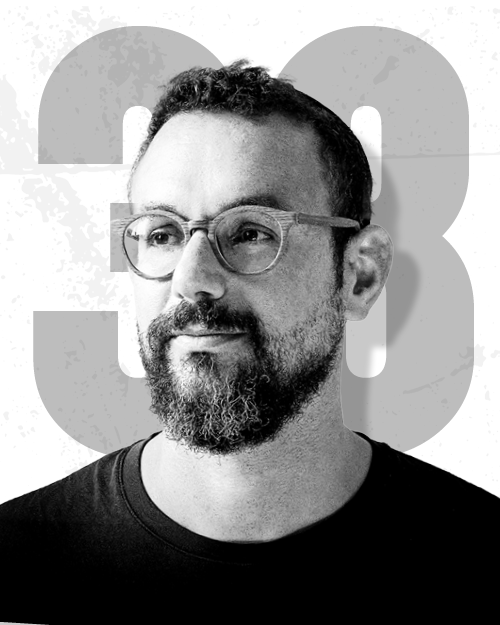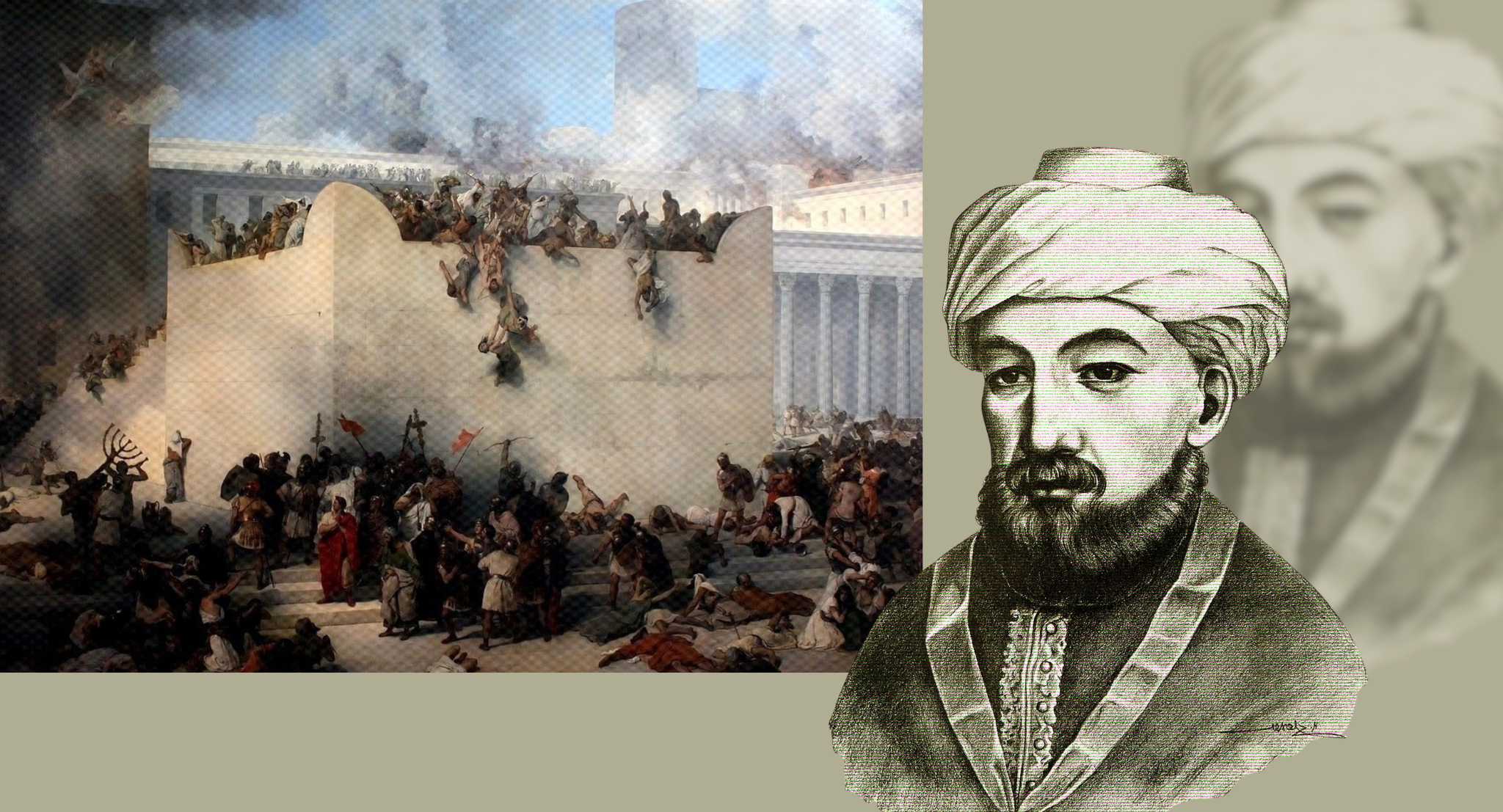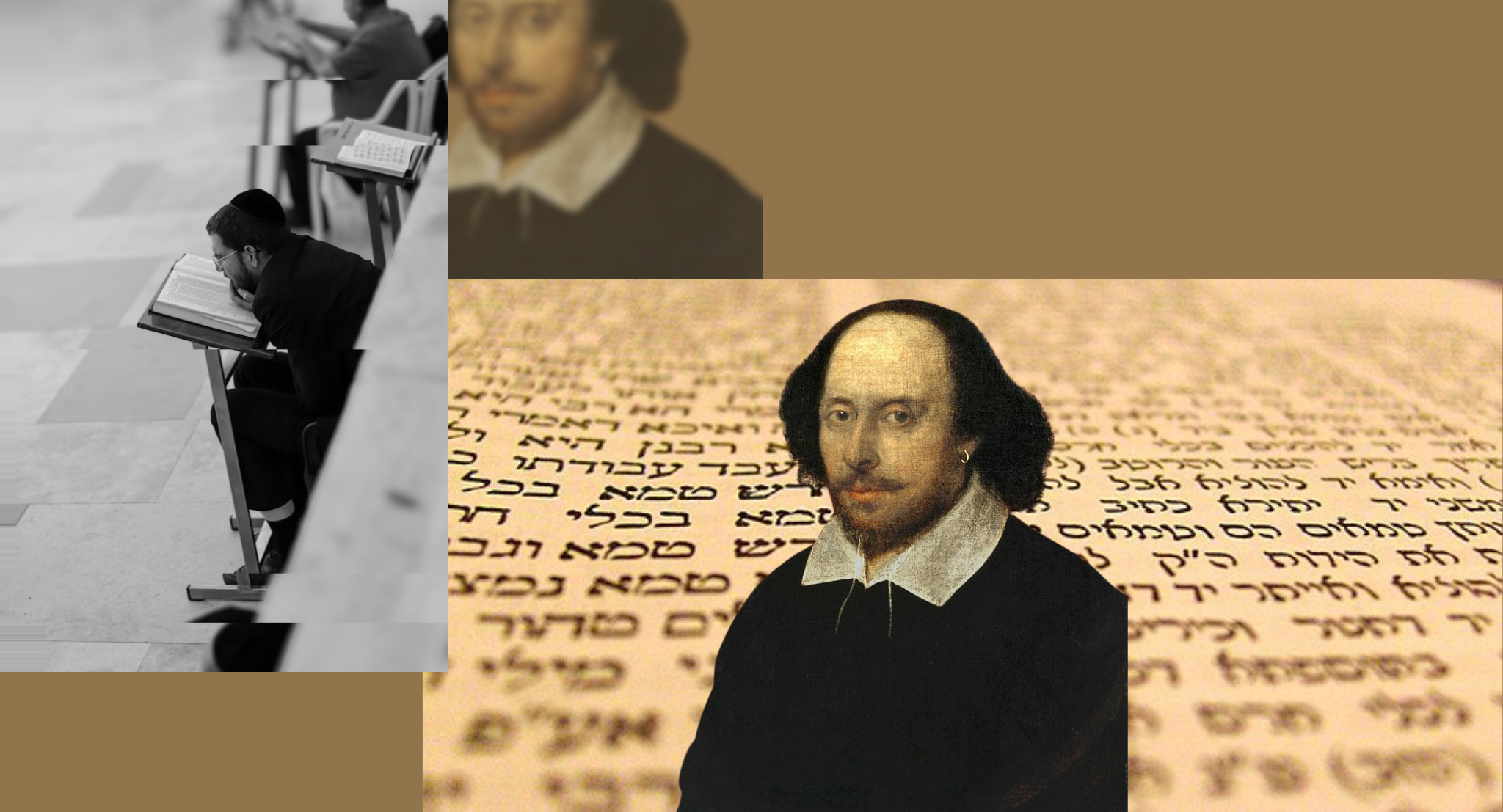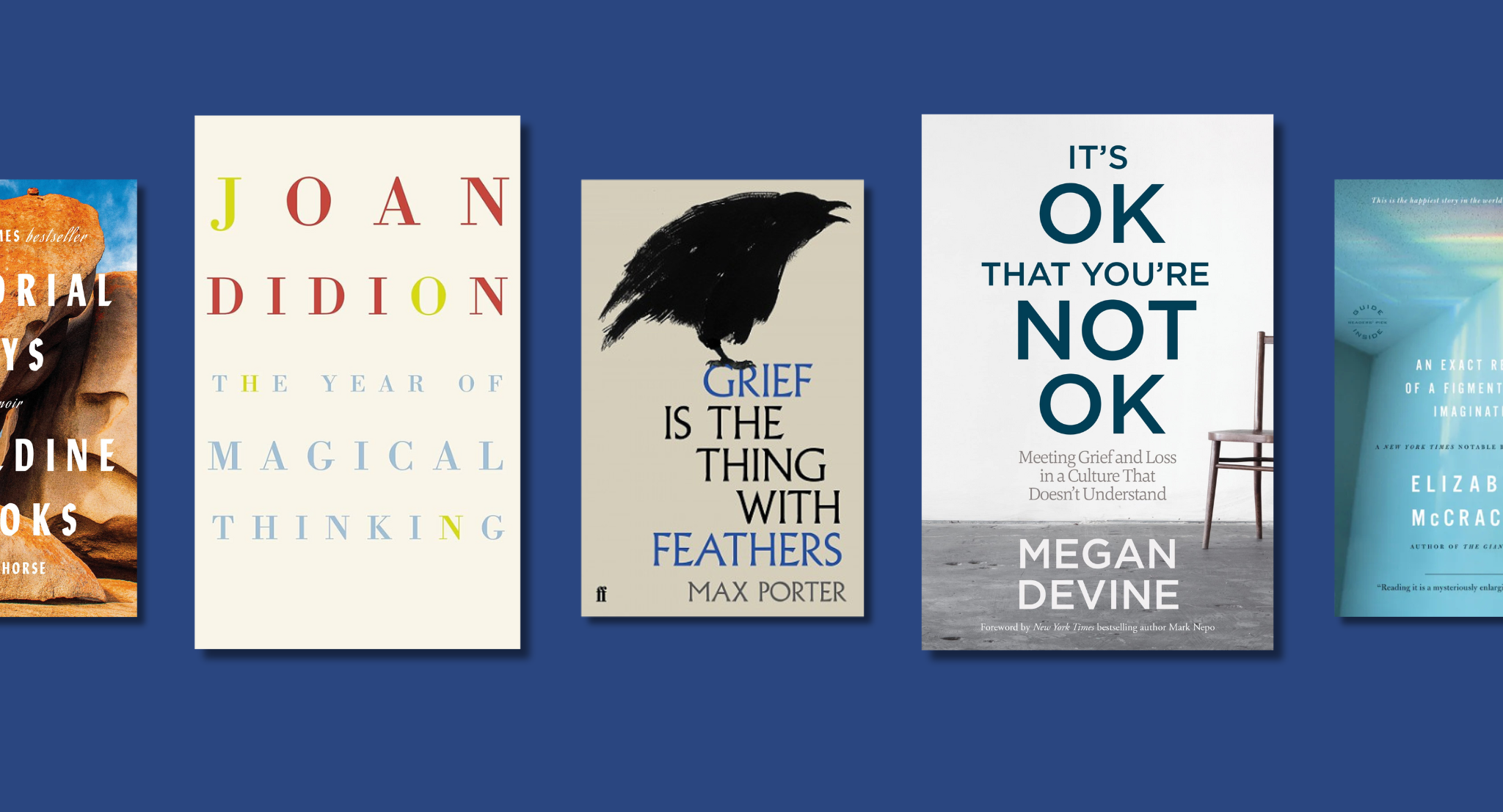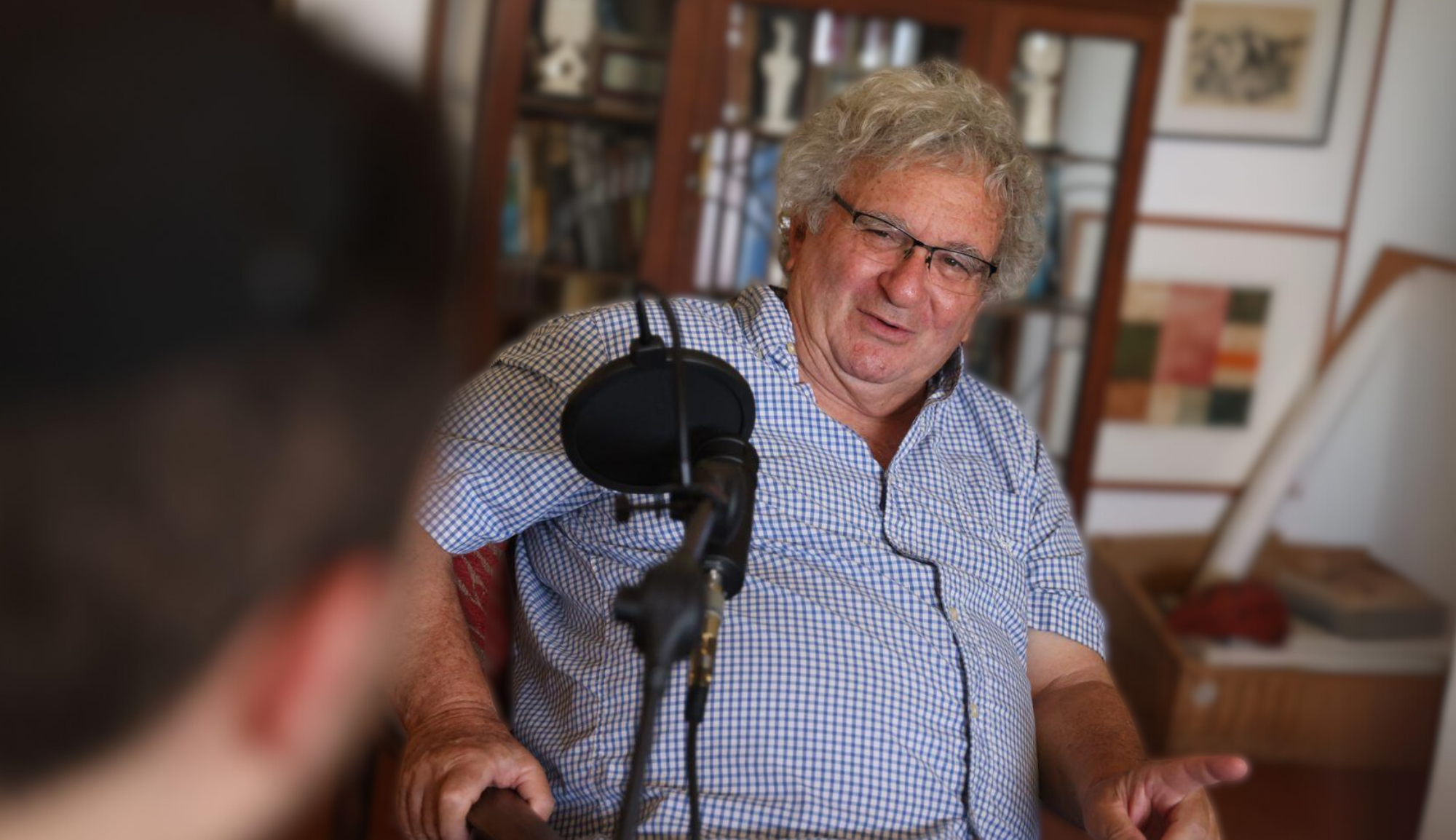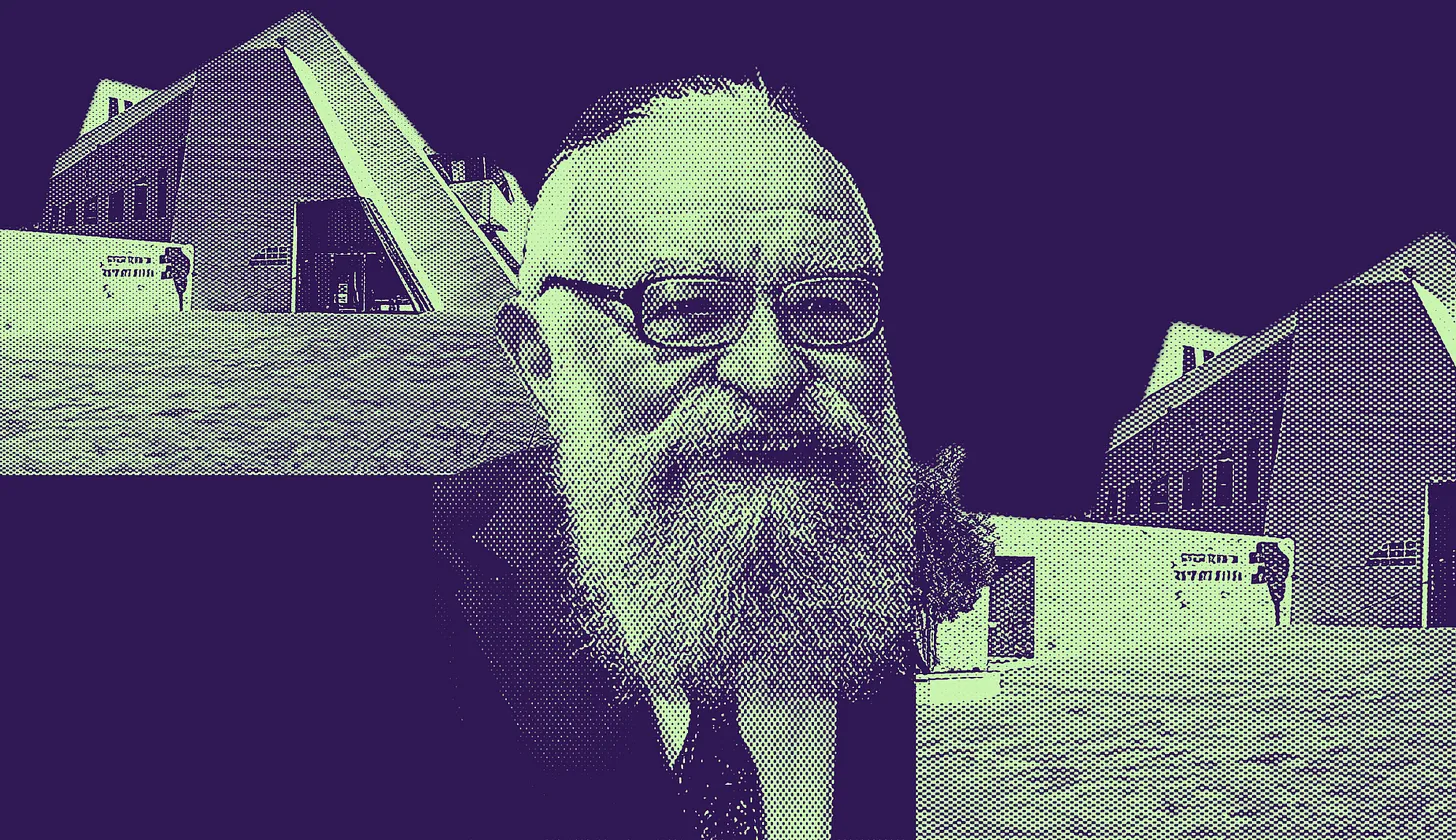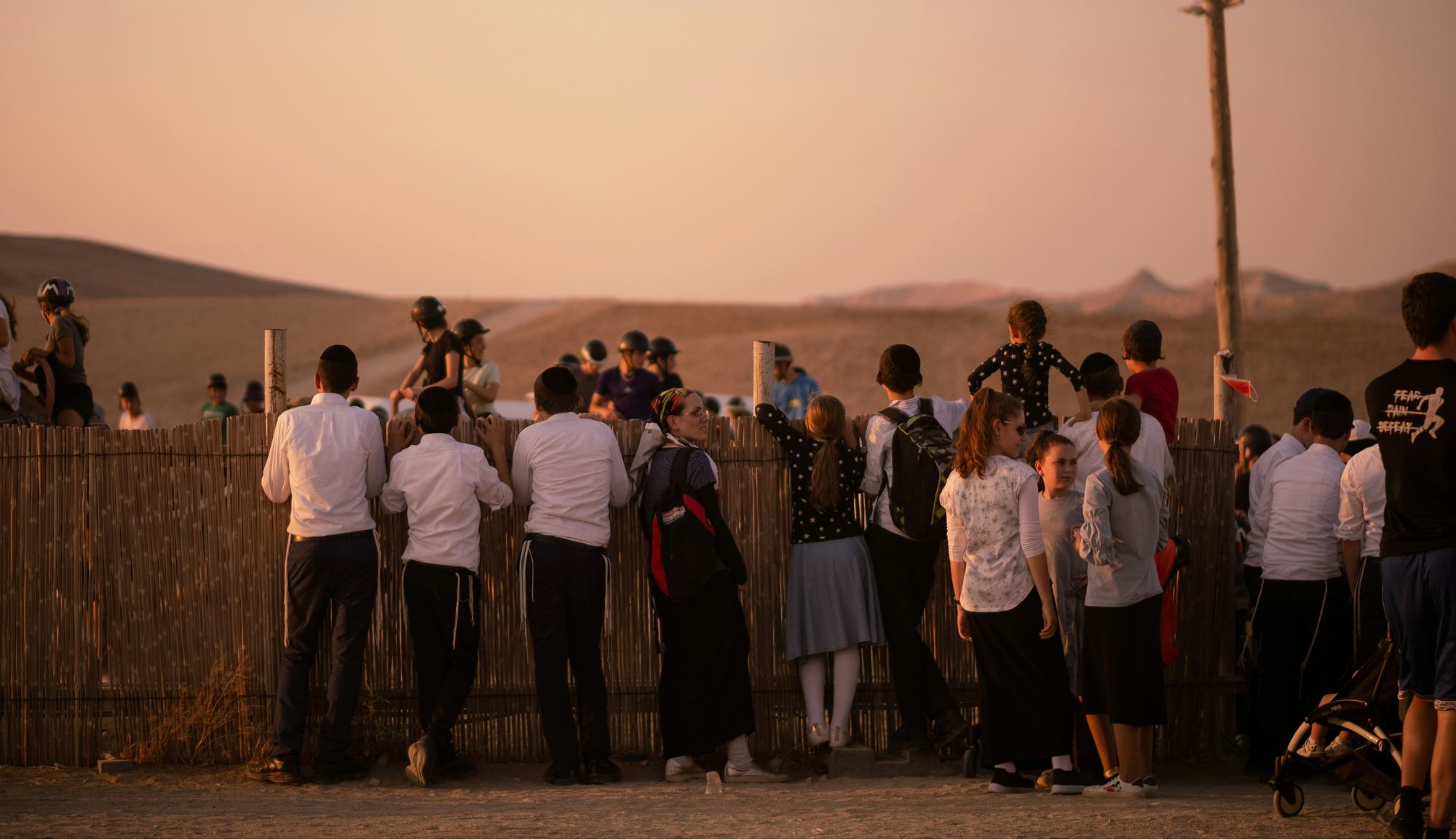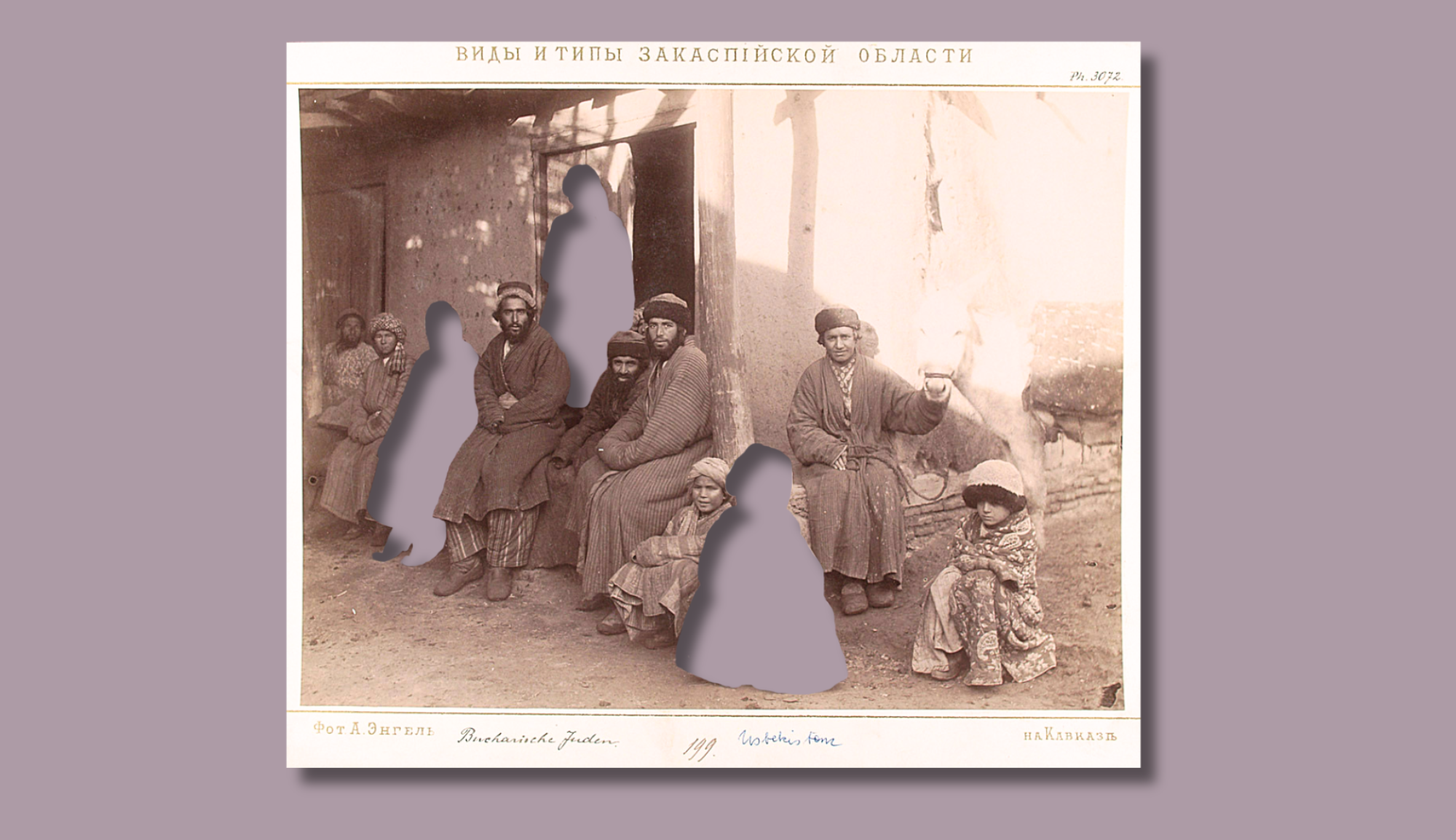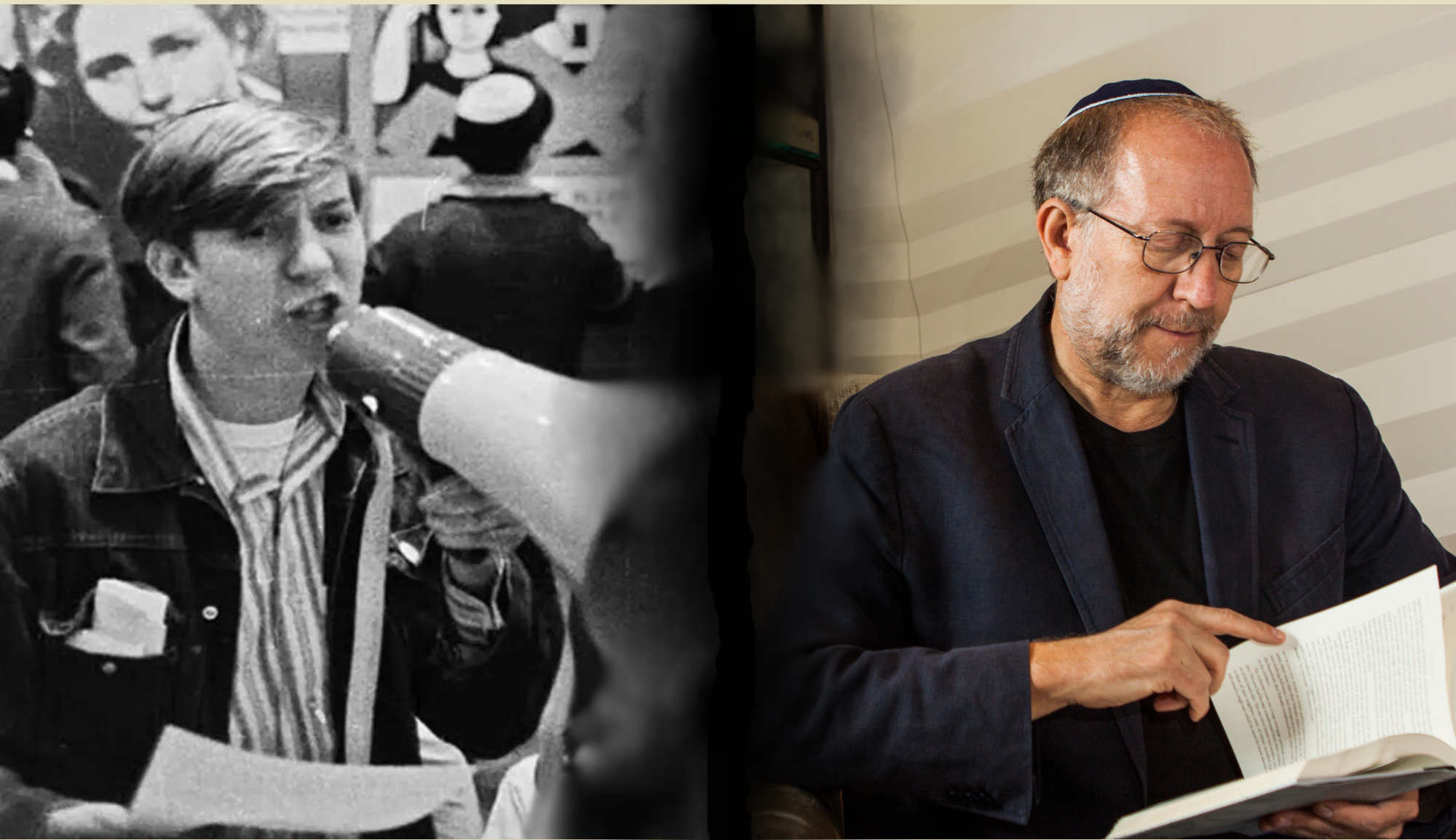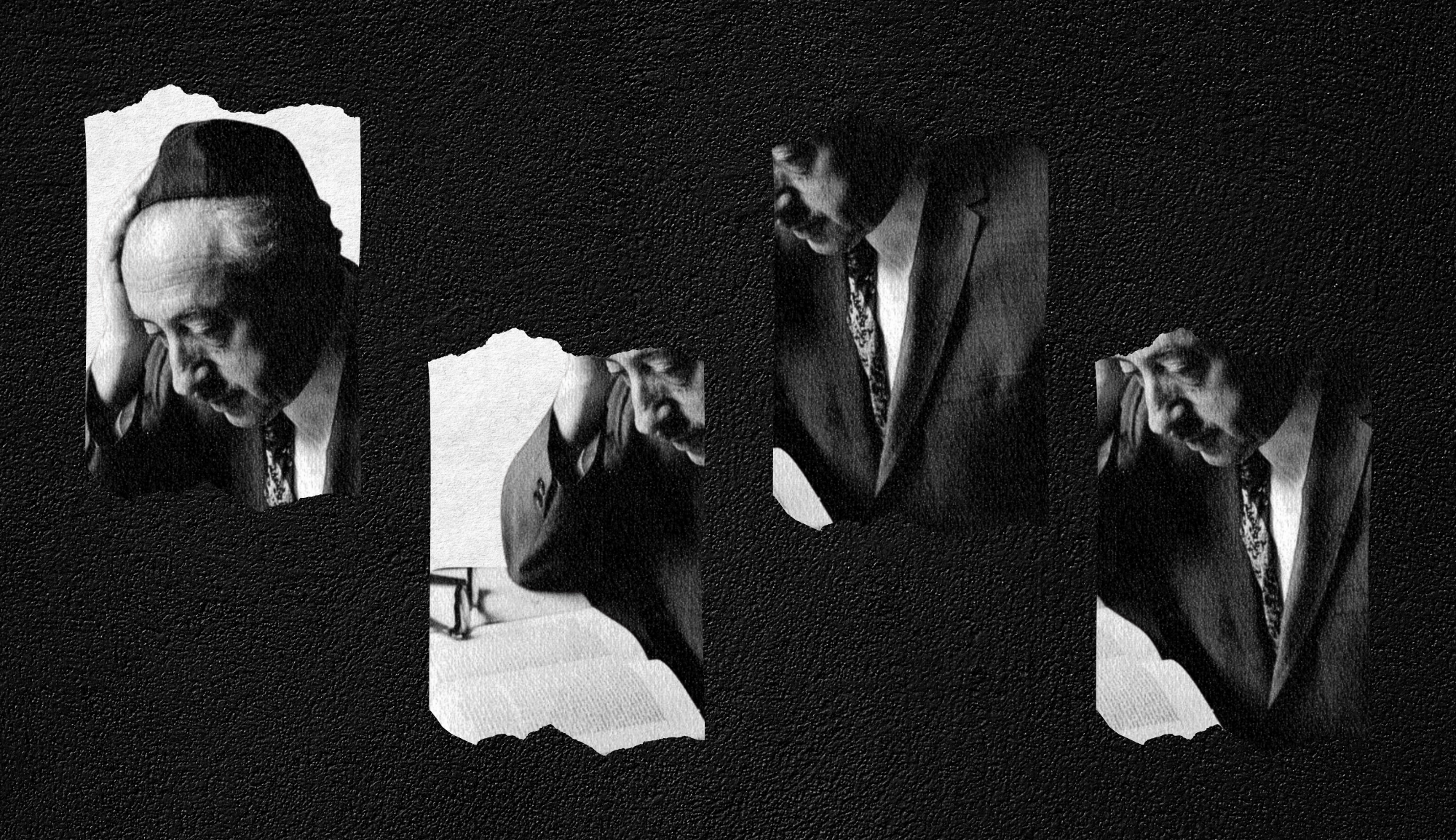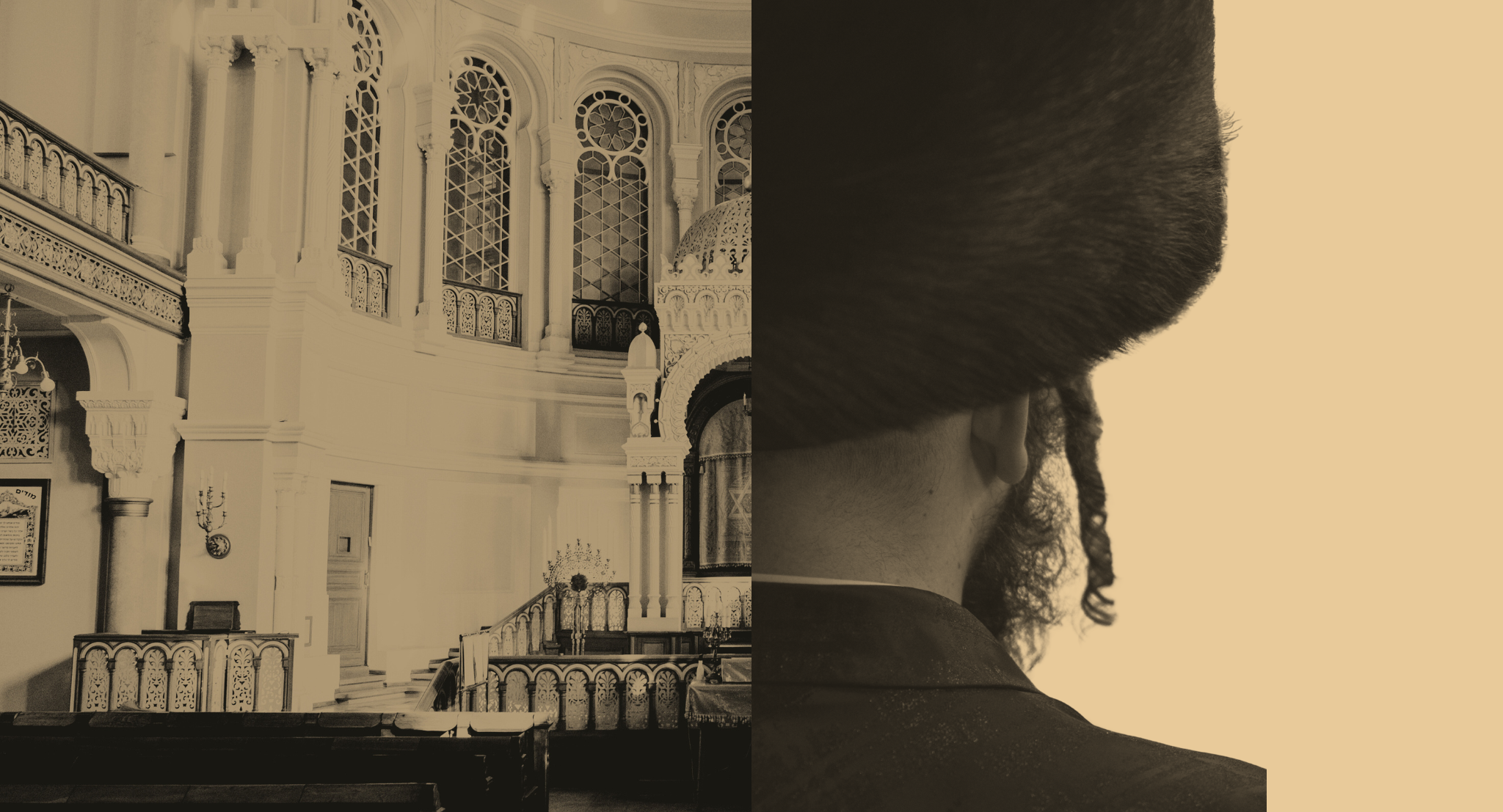Michelle Chesner: A Page is Worth a Thousand Worlds
In this episode, David and special guest, Michelle Chesner, Columbia University’s Norman E. Alexander Librarian for Jewish Studies, discuss how the formatting of sacred Jewish texts has developed throughout Jewish history and impacted religious Judaism.
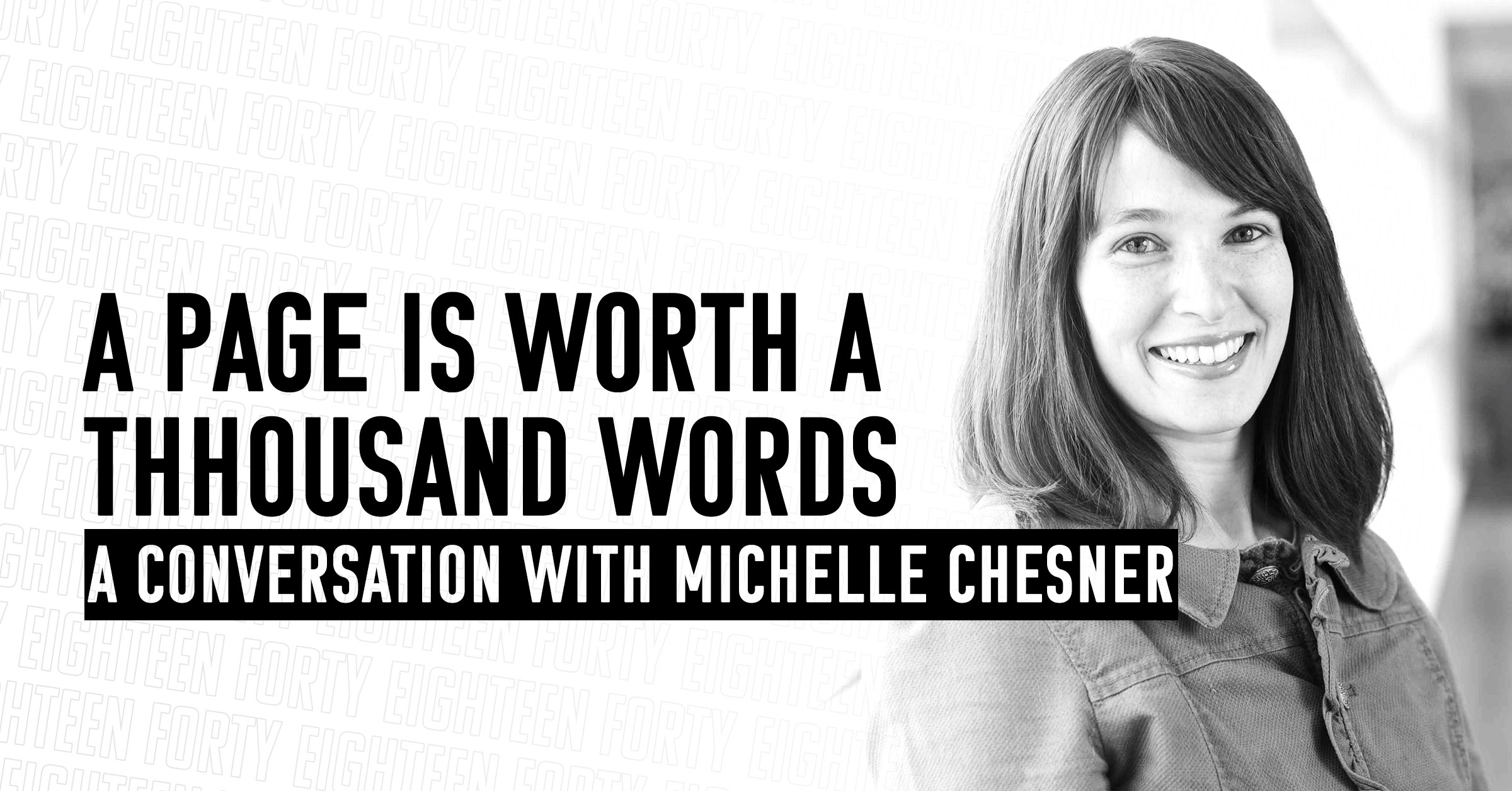
Summary
In this episode, David and special guest, Michelle Chesner, Columbia University’s Norman E. Alexander Librarian for Jewish Studies, discuss how the formatting of sacred Jewish texts has developed throughout Jewish history and impacted religious Judaism.
While Jewish culture has influenced Jewish texts, Jewish texts have influenced Jewish culture, too. Due to Jews’ fixation on the format seen in today’s Talmud (Vilna Shas) throughout the history of the text itself, for example, a Talmud study remains a hyper-shared experience; amazingly, Jews around the world can be learning the same text by referring only to the page number.
Today, with social media, we are witnessing a printing renaissance perhaps not seen since the 1400s. As we venture further into the digital era, increased accessibility to these publishing tools presents a great challenge to the rabbinical authority. Members of the rabbinate, agnostics, and heretics have equal publishing power, meaning the volume and visibility of public criticism of traditional Judaism will continue to increase. Discussions of proposed changes such as reformatting the Talmud page are quietly emerging in smaller circles, and though it may seem unimportant to some, the mere conversation of changing religious traditions dating back to the late 15th century tells a great deal about the state of modern Judaism. Tune in to join David and Michelle in discussing the conflict between modernity and Jewish tradition through the lens of religious textual formatting.
Transcript
David Bashevkin:
Welcome to the 18Forty Podcast, where we discuss issues, personalities, and ideas about religion and traditional world confrontation with modernity, and how on earth are we supposed to construct meaning in the contemporary world right now? I am so excited to have a dear friend, and also somebody who’s extraordinarily fascinating, Michelle Chesner, who is the Norman E. Alexander librarian for Jewish studies at Columbia University, which houses a fascinating collection of both Talmud, Jewish manuscripts, modern day collections, and she oversees all of that. Michelle, thank you so much for being here.
Michelle Chesner:
Thank you for having me.
David Bashevkin:
What I want to talk about is expanding the conversation of Talmud per se, and talking about the transition from an oral culture to a print culture. As most people know, the Talmud was originally preserved through conversation and through talking, and then eventually it was written down. What you oversee, and so much of what you focus on, is that print culture that emerges. I was wondering if you could talk broadly about how a printed work affects, or can affect, a religious culture.
Michelle Chesner:
Sure. When I give a course to a class on any part of Jewish studies, I often bring out the rare books and manuscripts to show them the objects of Jewish culture that were used. One of the pieces that I love to bring out is a bifolio from the Cairo Genizah, it’s dated to about the 10th century. It’s two leaves of Masechet Menachot, and it is just the text of the Gemara. I show it to students, and many of the students, a good enough number in the room, is familiar with the Talmud text. And I say to them, “Identify this. What is this?” Most of them look at it and have no idea. And the reason for that is that it’s just the Talmud text. And as I explained to the students, it was before Rashi and Tosafot were born.
David Bashevkin:
There’s no title, there’s no page number –
Michelle Chesner:
Not only that, but there’s no commentary, which you would expect the Talmud text to look like, with the Talmud in the middle and the commentaries on either side, is not there. And it throws askew their understanding of what you expect the Gemara to look like, because we assume that the Gemara is what you see in your standard edition in a yeshiva.
David Bashevkin:
100%. A, you use the word “leave,” I saw this once on Twitter, the different words for how academic librarians talk about – We know pages, and I guess in Yiddish there’s “blatt” and “daf”. Give me a quick rundown on the different terminology. There’s a leave and there’s a folio, correct?
Michelle Chesner:
Yes. Actually, the Gemara is a very good example for learning about early print, in that, the Gemara as it is, the printed Talmud as it is today, has many, many aspects of an early printed book. And the first is this concept of leaves. A leaf and a folio is the same thing, that’s one piece of paper, both sides, so a “daf” versus an “amud”. An amud would be a page.
David Bashevkin:
One side?
Michelle Chesner:
One side, and a daf is what we would call a “leaf” or a “folio”. “Folio” is a complicated word because it also means a large format book, it has to do with how the books were made.
David Bashevkin:
The size of them?
Michelle Chesner:
Yeah, the size of the paper, ultimately, but how the paper was folded, but generally, it means a big book.
David Bashevkin:
What I’m really fascinated by is, how they structured the page of the Talmud. I mean, you had a leaf that original just had the text itself, and we have a structure now that actually looks far different, they have commentaries on both sides. Recently, there was a great financial, Nassim Taleb, who was a financial writer, not Jewish as far as I know, who actually showed that he’s structuring his class in the same way that looks like the handouts that he gives, and it looked exactly like a Talmud page. And he said, “I was influenced from the Talmud.” Is that a uniquely Jewish structure? How did that evolve and why did that evolve?
Michelle Chesner:
It’s not a uniquely Jewish structure, it was Christian first.
David Bashevkin:
Oh, man.
Michelle Chesner:
Sorry. This was standard in medieval manuscripts, especially medieval law manuscripts, you see – Latin law, I should say – you see the text in the center with the commentaries around the edges. With the inception of print and movable type, which meant that you had to physically lay out a page, figure out where to put all the letters to make it work on one page in order to write this book, that largely went away, but Gershom Soncino, who was of the first and is the most well known from the 15th century to print a Talmud text, decided to continue with that style. And so that’s really why the Talmud exists as it does. If you look at manuscripts of the Talmud, and there are not a lot from the pre-print era, because of, there were two major burnings of the Talmud, one in the 13th century, one in the 16th century. Complete editions of the Talmud are very rare prior to print. I shouldn’t call them editions, complete manuscripts of the Talmud. The most well known one is in Munich, and that’s actually what was used for the first full printing of the Talmud. But that’s the only entire manuscript volume of the Talmud that we know of today.
David Bashevkin:
Pre-print?
Michelle Chesner:
Pre-print. That’s the entire thing.
David Bashevkin:
Beginning to end?
Michelle Chesner:
Yeah. There are other manuscripts for individual masechtot that are quite important, but it was too large of a corpus to have, to create. If you think about how to write a book before print, a scribe had to hand write, usually he was trained to write in a certain hand. I don’t know about you but my handwriting is not something that I would expect other people to be able to read.
David Bashevkin:
Can i be real with you for one second? I’m obsessed with my own handwriting.
Michelle Chesner:
Oh, so maybe yours. You could be a scribe.
David Bashevkin:
I need to see a psychologist, because when I’m spacing out, I just do my own signature over and over again.
Michelle Chesner:
Yes, there’s –
David Bashevkin:
That sounds like some form of narcissism there that’s not healthy.
Michelle Chesner:
Could be. Although if you look at early Jewish books, it was fairly common. You have people who wrote their name in inscriptions. That’s another project that I’m doing, I’m happy to talk about the Footprints Project another time –
David Bashevkin:
They’re inscriptions, though?
Michelle Chesner:
They’re inscriptions of owners, and they literally just write it over and over and over and over.
David Bashevkin:
Oh, they were doing it over and over again?
Michelle Chesner:
Yes, so it’s a psychosis that lots of people had for many, many years.
David Bashevkin:
That’s so validating.
Michelle Chesner:
There you go. But, back to the Talmud. Writing an entire book was a huge feat. Usually they would use parchment before paper came into wide use in Europe, and then paper, but all of this was expensive. Parchment required killing a number of cattle, and then preparing it, and making everything ready to be used. Ink cost money, and it was labor. Think about what it costs to write a Sefer Torah. It takes what, a year?
David Bashevkin:
Mm-hmm.
Michelle Chesner:
And that’s about, if you would put the pages, one on top of another, so you have a fairly thick book. To write a book of the entire Talmud, which is that many more words and pages, was an incredibly difficult feat.
David Bashevkin:
So what happens, we’ll go through and maybe talk a little bit more about the history of the Talmud page itself. But when print becomes prevalent, and once people start writing things down, is it, again, there was one shift where they started writing down the Talmud that’s far earlier than actual print and when they were able to mechanically move the letters. But, is it really just a question of labor and the financial repercussions? Or does print, and being able to publish books and ideas, what other way does that affect a religious community?
Michelle Chesner:
Well, especially if you’re talking about the Talmud, the most famous thing that then happened within 100 years of print and within 30 years of printing the Talmud, was that the Pope said, “The Talmud is bad. We need to burn it.” And he had a massive burning in Rome in the middle of the 16th century. The first person to print an entire set of the Talmud was Christian, it was Daniel Bomberg. He got permission from the authorities to be able to print. Jews were not allowed to print in Venice where Bomberg printed. He actually, interestingly enough, he had –
David Bashevkin:
Why were Jews specifically prohibited from print?
Michelle Chesner:
I don’t know why, particularly in Venice. I know in Germany for a while they weren’t allowed to join the printing guilds, so it depended on the place. It depended on just what the local, the in disability for Jews at that time was.
David Bashevkin:
Gotcha.
Michelle Chesner:
I’m sure there’s more to it, I’m oversimplifying it, but in the case of Venice, Daniel Bomberg got his permissions to print, and then he hired Jews, because he needed editors, and correctors, and people to go through the manuscript and set the type, and everything else.
David Bashevkin:
Do we know why he wanted to print the Talmud?
Michelle Chesner:
He was of a group of people called Christian Hebraists. He was a Christian who was interested in the study of Hebrew.
David Bashevkin:
What a fascinating group, not for our conversation now. I’ve always been fascinated in that, how Jewish ideas trickled into the Christian world, and vice versa, from these build-bridging personalities.
Michelle Chesner:
Yeah, and there are many different motives for it, some more nefarious than others –
David Bashevkin:
So he printed this Talmud, and then the pope got wind of it through that?
Michelle Chesner:
No, it wasn’t particularly because he printed the Talmud, but that was a giant publication that was around. And there was a big dispute that happened in the early 1550s between two rival printers, who were both trying to print the Mishneh Torah. And they both went to the authorities at the time, I can’t remember who they went to. I don’t think it was the pope. I don’t remember, but because of this dispute, it drew the attention of the pope, who then said, “Well, actually, the Talmud is completely heretical and anti-Christianity and it’s illegal.” And it was added to the then-brand-new index of prohibited books and it wasn’t allowed to be printed, owned, distributed, in Italy. And then printing of the Talmud moved elsewhere.
David Bashevkin:
Now, at what point did printing become, every home was owning, if you step into a lot of Jewish homes now, everybody has a Jewish library. When printing first began I imagine it was still very expensive. Do we have any idea of, what were the books that Jews – not the rabbinical lead, not the scholars – were gravitating towards?
Michelle Chesner:
Looking at the first 50 years of Hebrew print is a really good way to start to think about that. I ask people, “What do you think was the first book that was ever printed? If you would just guess out of a hat, if you’re printing Hebrew books, what would you print?”
David Bashevkin:
The chumash, the Bible?
Michelle Chesner:
But that’s accessible in every shul, so you don’t need that. Depending on how you date it, of the earliest books were halacha, were commentaries. And then, unusual things, like the Moreh Nevuchim, or –
David Bashevkin:
Early, those first 50 years?
Michelle Chesner:
Within the first 50 years, you have Avicenna’s Canon, which is a medical textbook from Ibn Sina, who was an Arabic doctor. Printed in Hebrew, because you have Jewish doctors who were interested in medicine. A lot of commentaries, like I said – And then there were some individual Talmud tractates that were printed, but one by one, so whatever was of interest, maybe what that community was learning, or what people wanted to study most, but not the entire thing. The Tur, the Arba’ah Turim, Yaakov ben Asher, because that was the latest halacha book. The Shulchan Aruch wouldn’t be printed for another 100 years. But then also a book on how Aristotelian logic applies to – how the Torah came up with the idea of Aristotelian logic, and you can prove literature through, you can prove rhetorical styles. It’s called the Nofet Zufim by Yehudah Messer Leon.
David Bashevkin:
It sounds like a page turner, I’ll be honest with you.
Michelle Chesner:
It was actually very controversial, and it got both him and the Maharik kicked out of Florence, I want to say, because –
David Bashevkin:
By the Jewish community or the Christian community?
Michelle Chesner:
The Christian community, because if the Maharik excommunicated Judah Messer Leon, it was a whole controversy because he was writing something that would take the Torah down and was considered heretical. Because, if you say that it’s written by God, then you can’t apply human standards of literature to it.
David Bashevkin:
But my impression is, and I guess I see this now because we’re living in almost another print renaissance that we haven’t seen since the 1400s, of the accessibility of publishing – in the world of social media, Facebook, Twitter, Instagram – that people have access to the tools of publication in a way that they didn’t have for several centuries before. And I wonder if the accessibility of print is an overall net positive on ideas, or an overall net negative. Did print end up, the best stuff would rise to the top when it first started and people were just so enamored with the system that they’re printing the best stuff? Or, the dangers of print is that anybody could print anything. And I wonder if that struggle, what we’re seeing now in 2019, existed back then.
Michelle Chesner:
Yeah, so if you look at the ruling people, who were obviously not the Jews, it took the church about 100 years to establish censorship. Martin Luther was a big problem, and that was a print problem. He printed all sorts of pamphlets about his criticisms of the church, that sort of thing, and they suddenly realized that the average person could get materials, in the vernacular, in languages that everybody could read. Translations of the Bible proliferated, and were complicated, because then people could look at it and criticize.
It happened more within, I would say certainly within the broader Christian culture in Western Europe. It did happen to some extent within Jewish culture, but it took a little bit longer.
David Bashevkin:
A little bit longer for people to just abuse the power, correct?
Michelle Chesner:
Not to abuse, but you don’t see it seen as abuse unless there’s somebody who comes down and says, “This is not okay.”
David Bashevkin:
When do we first start seeing that?
Michelle Chesner:
Actually, the example that I gave earlier, of the Maharik saying that Nofet Zufim is a heretical book, you should be excommunicated for writing it, and printing it, which was, again, a hugely expensive thing to do. That was printed in the late ’70s, I believe, late 1470s. I live in the 15th century, so I just assume ’70s are the 1470s. But, then you have Haskamot early in the 16th century coming out already, so you have rabbinic approbation saying this book is okay.
David Bashevkin:
And that was permission to print?
Michelle Chesner:
It wasn’t necessarily permission to print, but it was just something, because people could print… There wasn’t enough control over the printers to say, “you’re not allowed to print that,” until later. There were instances where, I just read a wonderful book, actually, about Jewish printing in London, where, yes –
David Bashevkin:
What book? Tell us what book.
Michelle Chesner:
It was called Lost in Translation, Found in Transliteration, and it’s about-
David Bashevkin:
What a lovely title.
Michelle Chesner:
It’s a wonderful book. I highly recommend it if you’re interested in print and how that was impacted, how the Jewish community was impacted. And it was immediately after the Jews were allowed back into England, in the 17th century and then through the 18th century. Initially, the language that was spoken by the Jews in London, they were mostly ex-conversos that had gone through Amsterdam Sephardic, and then came to London. And they did not speak English, the language that they spoke was Spanish and Portuguese. Spanish was the language that they wrote in their records, Portuguese was primarily the language that they spoke among themselves. And the Mahamad in London did not allow printing in English, for as long as they could until they had less control. But the idea was that, Jews should not be printing in English because the language that we speak is Portuguese, the language that we write in is Spanish. That’s the Jewish language, we don’t speak English. There’s a fear of assimilation. And what I think is shown beautifully in this book is, those rules were in place very well for a time and then people started speaking English and acculturating, there’s only so much control one can have over a community and what they do.
David Bashevkin:
It’s interesting because, when I think of social media, like the publishing revolution that we have now, self-published authors, social media, all that thing, in many ways it serves as the great equalizer. Where regardless of gender, denomination, affiliation, you’re really able to step into the doors and say your piece, sometimes loudly, sometimes being dismissed, but you have an avenue of access. And I wonder if it was conscious that they were so careful to have these print guilds or the people overseeing what could be printed, because they realized the capacity of equality that emerges from printing.
Were there gender distinctions and who had access for early printing?
Michelle Chesner:
No. In fact, the very first woman to print a book was a Jewish woman, Estellina Conat, in Mantua, at her husband’s press. She worked alongside her husband in printing.
David Bashevkin:
Was she printing her own ideas or –
Michelle Chesner:
She wasn’t. She was printing the work of others, but for the most part, in early print, so in the 15th century certainly and the first part of the 16th century, I mean Yaakov Emden set up his own press to print his books, but that’s not until the 18th century, that’s much later. And you have others who were printing, Menasheh ben Israel is another good example in London and Amsterdam, who printed his own works on his own press. But in the early stages, again, it was a huge investment to print a book, so you were printing books that you expected to be bestsellers. The Aruch was another one. You need a dictionary.
David Bashevkin:
That was a bestseller?
Michelle Chesner:
That was a bestseller. Kimhi’s Sefer HaShorashim was a bestseller both for Jews and for Christians, because Christians who wanted to read Hebrew –
David Bashevkin:
Were given access to the language.
Michelle Chesner:
Yeah. Ironically the other Kimhi’s commentary on psalms was heavily, heavily censored because there’s some anti-Christian pieces in –
David Bashevkin:
That snuck in there.
Michelle Chesner:
In the commentary on tehillim. And what you would have with printing in Italy, actually, later again, in the later 16th century, the 17th century, and even onward a little bit, where sometimes it would say on the title page, in Italian I guess, though it may have been Latin, with the license of the censor. Which meant that the censor went through the book before it was printed and approved the text. In many cases, the censors didn’t know very much. We have books that have expurgations, meaning there are cross-outs from censors that looked at the books after the book was printed. Jews had to submit their libraries, in Italy, had to submit their libraries to the censors to be reviewed. And the censors would essentially cross out whatever words they thought were offensive to Christianity. In many cases, the censors didn’t know very much. They would cross out every instance of “goy” that they saw, even if it was something like “goy kadosh”.
David Bashevkin:
Uh-huh.
Michelle Chesner:
Yeah, because they assumed that that meant Christian and it was going to be negative. In some cases, it’s just strange.
David Bashevkin:
Even when the word was referring to Jews –
Michelle Chesner:
Even when the, yeah.
David Bashevkin:
That’s why my mother did not let me use the word “goy” in our house growing up, because she said Jews were also called goyim, so why would you use that term derisively to speak about others?
Michelle Chesner:
Very nice.
David Bashevkin:
Shout out to my mother.
Michelle Chesner:
Yes. What ends up happening is that the ink that the censors use is inferior to the ink that was used at the press, so it ends up looking like a highlighter. If you look at a book that has cross-outs, you see right away those words that were crossed out because the ink has faded over time and the ink of the print has not. So it serves to actually emphasize that-
David Bashevkin:
So it looks like a highlighter?
Michelle Chesner:
That bad text, yeah.
David Bashevkin:
It comes out as a highlighter.
Michelle Chesner:
Yeah, which is kind of cool.
David Bashevkin:
We’re known as the People of the Book. And my question is, aside from the Jewish ideas that were printed, and I asked you about the layout of the Talmud page and you said that that was Christian, what were the ways in which –
Michelle Chesner:
It wasn’t only Christian.
David Bashevkin:
Only Christian, but –
Michelle Chesner:
But there was a Christian that had a lot of impact on it.
David Bashevkin:
Gotcha. But what were the ways in which Jewishness was able to be transmitted in a print culture when you open up a Talmud? Were there uniquely Jewish features? I know there’s always that title page when you open up the Talmud that has that great, looks like an entryway. There’s the lions on there, sometimes it would have sketches of Moshe and Aaron. I’m interested in the ways that books, and our being the People of the Book, how did the peopleness trickle in and how was it transmitted in the book itself?
Michelle Chesner:
What’s funny about the Talmud is that, it has so much throwback, one might say, to early print.
David Bashevkin:
Even the Talmud that we have in front of us now?
Michelle Chesner:
Yes, because it hasn’t changed, because that text is the same. The reason that we talk about daf bet amud alef, we start on daf bet because the way that the books were counted, it was technically the second leaf. But the first leaf was the title page.
David Bashevkin:
Don’t you dare.
Michelle Chesner:
And they weren’t numbered.
David Bashevkin:
That is not what my rebbe told me.
Michelle Chesner:
And amud alef is simply what we would call, in library language, folio 2A or 2 recto, because it’s the front side of the page as opposed to the verso, which is the back side of the page.
David Bashevkin:
You know you’re crushing my childhood dreams right now.
Michelle Chesner:
This is all early print. I mean, this is –
David Bashevkin:
Did you not grow up with the rebbe saying that daf alef was middos in treating other people correctly?
Michelle Chesner:
I didn’t grow up studying Gemara, so I missed that lesson.
David Bashevkin:
So you just crushed my childhood dreams.
Michelle Chesner:
I’m so sorry. I’m sure there were deeper spiritual reasons that these things happened.
David Bashevkin:
For sure, for sure. But the standard reason that it starts on the second page is because all books really started on…
Michelle Chesner:
On the second page, if you have a title page.
David Bashevkin:
Mm-hmm.
Michelle Chesner:
Yeah. There were others, as well, there are other things, as well. I would not be so bold as to say that something like the Hadran is something that has to do with print. But what you used to have at the end of, I’m just going to say the two things next to each other. The Hadran obviously is before, but at the end of a book you used to have something called a “colophon,” which would indicate the name of the printer, so it would say, “I, Yakov ben-Yosef, printed this book in, I don’t know, Venice in 1502,” which was impossible –
David Bashevkin:
That’s at the end of the book. One was the equivalent of the author bio?
Michelle Chesner:
It was a paragraph directly after the last word of the page, tam venishlam, and then there was a little paragraph about the end of the book. That was just something that I noticed is having this thing that says, “The book is complete, I am done, and I’m letting you know that I finished the book, and I’m the one who finished it and here’s when it was printed and when.” That ultimately changed once title pages became much more prevalent in the 16th century, but throughout the 15th century, you have books with these little paragraphs at the end. And some of them are actually quite lovely. The Hebrew ones are fantastic, because they talk about how, “Here I can study, I’ve used this technology that’s like many quills printing at one time – ”
David Bashevkin:
They wax poetic about –
Michelle Chesner:
Literally, I mean it’s poetry. It’s in rhymed poetry about how amazing this is, how before I used to take out five books, and now I have all of those books in one. You see the wonder with which they were seeing this technology, that they themselves were using. But they found it to be absolutely amazing.
David Bashevkin:
Maybe you could just walk through the Talmud page that you open up today in an Artscroll, Koren, Vilna Shas, that you take off your shelf. How did we get to that from the leaf that you showed your class, Masechtas Menachos, how did we get from one to another? It began as an oral tradition, it was eventually written down, and eventually they were printed. How did we get from the first printing that we think about, which may have just been the Talmud text, to what we have in front of us now when you open up off the shelf?
Michelle Chesner:
First of all, there were decisions that were made at every level. So when Gershom Soncino decided to print Tosafot, that was an Ashkenazi… So he decided this was the layout he wanted to do. He wanted to do the –
David Bashevkin:
What year are we talking now?
Michelle Chesner:
Soncino was 1483, he printed Masechet Brachot.
David Bashevkin:
Okay.
Michelle Chesner:
And that was with Rashi and Tosafot.
David Bashevkin:
This is still right in the dawn of printing?
Michelle Chesner:
Right at the beginning. There were other volumes, at least nine volumes were printed in Spain around 1480. They’re not dated so it’s unclear, but that’s when the press was very active. There was a very active press in Iberia before the Jews were expelled in 1492. But those volumes of Gemara only included Rashi’s commentary.
David Bashevkin:
Gotcha.
Michelle Chesner:
Because Tosafot was not something that was standard in the Sephardic world. But because Gershom Soncino was of German descent and who moved to Italy to be in his press, he chose to print the Talmud with the commentaries that he used. And so that was those two. And so he printed it, he was the one who determined that modern layout. It was then Daniel Bomberg, who, he took over the market. First of all, he was fabulously wealthy. He was able to afford to do what Soncino would not. He had the major advantage of being Christian. The Jews that he hired, he was able to –
David Bashevkin:
How many years later is Bomberg now? You said 1483 is Soncino?
Michelle Chesner:
Soncino, it was a generational, I think it went three generations, so he was still printing when Bomberg, his grandson was still printing when Bomberg was printing. But he complained about how it’s so hard for him and he had to travel a lot, and he was Jewish, he had to deal with what Jews had to deal with. Whereas, Bomberg was Christian. He got a law waived for the Jews that worked for him that they didn’t have to wear the Jew badge, so that they wouldn’t be accosted when they walked around Venice.
David Bashevkin:
Gotcha.
Michelle Chesner:
And so they could blend in so that they could work for him. And then he decided that he’s taking on this major project. He claims that he gathered manuscripts from around the known world. We know that he definitely looked at Munich. There were some variants that he included that are in the Munich manuscript, so we know that he definitely looked at that one. And maybe just at that one, because that was convenient that he could look at.
David Bashevkin:
Even though he claimed to see more? We don’t know.
Michelle Chesner:
Even though he claimed, we just don’t know. There’s no way without knowing, without having been there, or seeing his annotations on stuff. And then he decided, so it was just that text. So if you look at your regular Talmud today, there’s obviously much more on the page than just Gemara Rashi Tosafot. What I’ve seen in the Bomberg Talmuds that are in Columbia’s collection is, we have the Masoret HaShas, so those citations to what the Gemara’s talking about, which is on the side. Those were handwritten. Bomberg did not include that, but somebody who used a Bomberg really wanted those citations there, and so he put them in by hand.
David Bashevkin:
And the pagination that we have in front of us now, that started with Soncino or Bomberg?
Michelle Chesner:
That started with Bomberg.
David Bashevkin:
Gotcha.
Michelle Chesner:
And so he was paginating it, he was foliating it, I would say, because he’s putting in folio numbers rather than pagination, because it’s not one on one side of the page and then two –
David Bashevkin:
I love the word “foliating,” what a lovely term.
Michelle Chesner:
That’s how we say, is the book foliated. That means is it numbered, is it paginated, but they’re not pages.
David Bashevkin:
I think of a face scrub, when I think of the term –
Michelle Chesner:
“Exfoliated”.
David Bashevkin:
I know but it just feels very cleansing and warm. I like that term.
Michelle Chesner:
Yes, it is.
David Bashevkin:
So when you foliate something, you’re adding on the page numbers, and he’s the one who foliated the modern – we still use that pagination now?
Michelle Chesner:
Yeah, it’s slightly different. The Talmud that was produced in Vilna is exactly the same as what we use today.
David Bashevkin:
That’s the next stage after Bomberg?
Michelle Chesner:
There were many stages after Bomberg, but that’s the one that you can say letter for letter is the same.
David Bashevkin:
And we still use that pagination, even though we use laser printers and all that fancier…
Michelle Chesner:
Yeah. And when you think about it, who wants to reset that gigantic corpus? I mean, re-typeset. Because it’s already done, somebody did it 500 years ago for you. Why would you want to mess with it?
David Bashevkin:
Do you think that’s why it’s grabbed hold of the community in some way, and there’s been controversies, and I’m curious… There’s been controversies every dozen or so years about changing what’s the known as the “tzuras hadaf,” the setup of the page. Is that something unique in the Jewish community, that we become, so to speak, attached to the actual look of the page? Are there other religious communities who have books where the very layout, the pagination, has a communal or mystical significance? I mean, people attribute mystical significance to some of the page numbers. And you’re there as a librarian knowing the history, knowing how all this evolved. There’s something very charming about it. Is that in fact unique to the Jewish community? Do you know of other…
Michelle Chesner:
I don’t know. I know that there are aspects of the Quran, but I don’t know enough about it to say anything –
David Bashevkin:
But there’s a tzuras hadaf, so to speak?
Michelle Chesner:
I don’t know, I’m going to say I just don’t know. I think there is something amazing, I mean, when you think about something like the siyum hashas, that everybody can be learning the same thing around the world at the same time just by page number. There’s something incredibly beautiful about that.
David Bashevkin:
When did they… I mean, the siyum hashas is very modern.
Michelle Chesner:
Yes.
David Bashevkin:
Early 1900s. When did people realize that keeping the same edition can have a unifying factor? Again, in the way that you cite it, I mean, all the commentaries, you can have a totally separate book and they’re all citing the same page, it becomes a unifying entity.
Michelle Chesner:
Yes.
David Bashevkin:
The fact that they all have that.
Michelle Chesner:
You could also be a little bit more cynical and say, well, the first person who did it was a Christian, and he was appreciative of the fact that Christians needed access to the Talmud in order to dispute it, and to say that the Talmud actually proves the truth of Christianity. If you’re all using the same page, you can at least cite it.
David Bashevkin:
I can hear the air going out of my mystical balloon right now.
Michelle Chesner:
It goes both ways. Christians loved the fact that this was an easy way that you can refer to the Talmud as well. The same thing with enumeration, perakim, in Chumash.
David Bashevkin:
Chapters, yeah.
Michelle Chesner:
In Chumash you have, those were done by the Christian printers. It may have been before print, actually, but it was –
David Bashevkin:
Those were added in, those were not Jewish.
Michelle Chesner:
The perakim themselves are not a Jewish thing, they were done so that Christians could cite chapter and verse.
David Bashevkin:
And do you know if that was a nefarious addition, that they wanted to be able to cite to either –
Michelle Chesner:
It doesn’t have to be nefarious. I mean, if they’re talking about the Old Testament, they want to be able to cite the Old Testament for Christian purposes. With the Talmud it may have been more nefarious, because the only reason, not the only reason, but a major reason that Christians would study the Talmud would be to refute it and to say, “The Talmud proves that Jesus was the Messiah,” that sort of thing. And that certainly happened, and that happened before print, but standardizing it made it easy.
David Bashevkin:
I’m curious to know on a more personal level, how being surrounded by the world of print has affected your, either appreciation of communication through writing and email, versus live conversation. Do you find that you’re more sensitive or you gravitate towards one or the other? Are you dying for a conversation because you’re spending most of your day reading books? Or it’s almost like there’s an unwieldiness to talking to somebody else on the – When somebody calls me on the phone, I look at it as an act of aggression.
Michelle Chesner:
What are you, a millennial? Yes.
David Bashevkin:
How has this, a culture, let’s not talk about the Jewish community in totality, how has it affected Michelle?
Michelle Chesner:
It just gives an awareness. When I spent a year in Israel in the very early 2000s, I printed every email that I got because the email was a special server, we didn’t have separate online access. We had just email. And I printed my emails from that year because I knew that otherwise there would be no record of them. So that either makes me very nerdy or a super born librarian, because it’s just an awareness –
David Bashevkin:
Or both.
Michelle Chesner:
Yeah, of the I guess ephemerality of things, that stuff – When you have conversations, all the stuff that you text now, you have these deep conversations on WhatsApp, there’s no record. It’s end-to-end encrypted. Or you change phones and something doesn’t change over. There’s so much more data that’s lost now because people are not thoughtful about it. I’m not saying that they should be, it’s just an awareness of, when you look at older texts, and when you sit as I do all day with the remnants of the past, I would call it, it was all physical. And making it digital is scary, because what will be, in 100 years, what will be remembered of your tweets?
David Bashevkin:
I’m just curious, are you a printer, like your pictures of family and that, are you printing that stuff out?
Michelle Chesner:
I do print pictures, yeah.
David Bashevkin:
You do print them?
Michelle Chesner:
Yeah.
David Bashevkin:
Because you have that –
Michelle Chesner:
I don’t print my emails anymore, I’ve gotten past that.
David Bashevkin:
But you have that librarian culture of, you want that –
Michelle Chesner:
I want something that remains.
David Bashevkin:
That tangibility?
Michelle Chesner:
I mean, it’s become a real problem. I once read an article about a woman whose husband died, and she didn’t have any of his email passwords. And she was stuck. She couldn’t get into his phone, she didn’t know how to get into the bank account, how to get into anything. And it just took a whole long process because we keep our data… It’s ironic, because in some ways we say that everybody can see our data. But on the other hand, there are some things that we have that are just inaccessible. And maybe you want them accessible, maybe not, but just think about what you want to preserve in the future. The Library of Congress initially had said that they were going to archive Twitter. They said this right when Twitter started, maybe 10 years ago or so?
David Bashevkin:
Mm-hmm. Then they saw what was happening there.
Michelle Chesner:
A few years later, they said, “Well, actually, we’re just going to archive select tweets.” This is something I as a librarian think about all the time. We have a web archiving program, where we go into websites that we consider to be endangered, for usually political, governmental, around the world, reasons. And we go to the internet archive and we have them take a snapshot of the entire website down to the deep levels. Because what the internet archive does, for everything, and this not many people know, usually they just do the first page, or the first couple of pages. So if you go deep, you have to click deep into a site, that’s gone, unless you specifically archive it. Thinking about some of these older media, unless you’re careful about it, unless you were careful about it, it could be gone and completely inaccessible.
David Bashevkin:
Maybe talk more broadly, with that foundation, when you look, with your knowledge and going back in history, what does the story of Jewish printing tell us that we were trying to preserve?
Michelle Chesner:
I don’t think we were preserving, we were making things accessible. There wasn’t a thought about the future, it was, “What we need now? We want Rashi on Torah. We want Gemaras. We want halakha.” That was more, it was, “How can we utilize this right now?” And they were used. I mean, one of the things that I say when I’m talking to a, I tell this to lots of people, is that I like dirty books. I like books that have been used, that are literally dirty –
David Bashevkin:
Thank you for that clarification.
Michelle Chesner:
I know, there’s always the first level of shock. But, for instance, we have a manuscript of a Haggadah that has traces of food and wine on it, I mean, I’m talking literally dirty.
David Bashevkin:
And when was it –
Michelle Chesner:
But it’s from the 18th century in France. We could technically do chemical analyses of these texts and see what those Jews were eating on Pesach. But when the person who made that Haggadah made the Haggadah, they made it so that it could be used at the Seder, and clearly it was used at the Seder. To me, what’s amazing, I mean my look at it, and this isn’t what you asked, I’m going to have to ask you to say it again, but, is that you see what stays the same, what stays the same in this book text culture. Things that we use that we continue to use, as Jews, and have been used for so many years. It’s really incredible when you see that way. One of the Talmuds we have, which is interesting, and thinking also about the layout of the text, the Shita Mekubetzet is not on the page itself, but in this particular volume that we have here – and there are a couple of other tractates at the National Library of Israel that also had this – somebody decided they wanted Shita Mekubetzet on the page, and so they wrote out, in a beautiful scribal hand, the entire Shita Mekubetzet.
David Bashevkin:
On the page of the Talmud?
Michelle Chesner:
On the page of the Talmud as it applied to those words of the page. I guess there’s a little bit of fluidity, just in terms of what had been used, the trajectory of what would become what’s now the standard page. And a lot of it, I mean, if you look at the standard page now, a lot of it is reference, it’s citations, it’s being able to look at other things aside from the basic commentaries. And that makes sense. And then you go to the back, or you go to your extra volumes to see other commentaries. But it’s an incredible book in that way, in that there was a need for certain texts to be available. And so somebody said, “Well, why don’t we just print it on the page?”
David Bashevkin:
Let me wrap up and ask some broader questions, this is my own curiosity. What do you think is the most fascinating piece in the Columbia Jewish Studies Library?
Michelle Chesner:
That’s a hard question. I can tell you my favorite book, easy.
David Bashevkin:
What’s your favorite?
Michelle Chesner:
My favorite book is not in the Columbia collection, alas. If anybody wants to give us a copy, we would be very happy to accept it. And it’s the story of the fluidity of the books and Jews in general. There was a book that was printed, and the very first book ever to be printed in Constantinople, it’s now Istanbul, was an Arba’ah Turim of Yaakov ben Asher, printed in 1493. Sounds somewhat mundane. I mean, they’re just typical, but the reason that HaTur is the most exciting book to me is that it was printed in 1493 with type and wood cuts that came from Spain, with paper that came from Naples and Venice. And then it was printed a year after the expulsion of the Jews from Spain in 1493. This book, if you hold this book in your hand, and that’s part of the reason why I would love to have a copy for myself, but unfortunately that’s out of my budget, is you’re holding the history of Sephardic Jewry, basically. These printers were expelled, Nachmias brothers, they were expelled from Spain in 1492. They packed up the type from Guadalajara and Hijar, which were two places of printing of Hebrew books. They then got on their wagons and they started traveling. They clearly ended up in Italy where they purchased paper. Both Venice and Naples, actually, were cities from which people went to Constantinople, and the legend has it that the ruler of Constantinople at the time said that, basically, Spain’s loss is our gain, “We welcome the Jews to the Ottoman Empire because we’re going to get, now, all of their economy and everything else.”
David Bashevkin:
In this one volume?
Michelle Chesner:
This one volume has all that history there, because, just the physical makeup of it gives it to you. But also, with the fluidity, what’s really interesting – it’s four volumes but it’s all bound in one book, it was all printed at one time – was the foliation. It’s not the foliation, it’s actually signatures. It’s a different way that the pages were numbered, and I don’t want to get into too much technicality. It started with yud-daled, tet-vav, yud-vav – no, yud-hey, then yud-vav, then yud-zayin, in the first book. And in the second book they change the “yud-hey” to a “tet-vav”. So they start this standard Hebrew numeration.
David Bashevkin:
They’re the ones who started that?
Michelle Chesner:
I don’t know if they’re the ones who started it.
David Bashevkin:
That’s interesting.
Michelle Chesner:
But even mid-print –
David Bashevkin:
Because that’s the name of God.
Michelle Chesner:
Because it’s the name of God. They didn’t want the yud and the hey together for 15, so for the first book they had it as 15, and for the second book they changed it, to tet-vav.
David Bashevkin:
You really want this book, but that is powerful.
Michelle Chesner:
I really do, but it sells for six figures.
David Bashevkin:
Six figures.
Michelle Chesner:
And as much as… Librarianship is fabulous but I don’t have that kind of…
David Bashevkin:
Not in the cards.
Michelle Chesner:
Yeah.
David Bashevkin:
Quick questions. You could respond fairly quickly and we’ll wrap up with this. What is your daily schedule like? When do you normally wake up and when do you normally go to sleep?
Michelle Chesner:
That’s very complicated. I wake up at 6:00 because I don’t live in Manhattan, so I need to be out of the house by 7:30 in order to get to work on time, because there’s New York City traffic. I technically –
David Bashevkin:
It’s the worst.
Michelle Chesner:
Yeah, I mean, I live 20 minutes from the city but it’s never 20 minutes.
David Bashevkin:
It’s never 20 minutes.
Michelle Chesner:
And then, I get my kids out and everything else. I’m usually at work around 9:00, and then my day can be anything. My job is two parts. I deal with the rare collection and I deal with the modern collection, so I cover everything in Jewish studies. I could open my email at any day and have questions about the latest book by Amos Oz and has it arrived yet, because I’m writing a paper on it. Actually, this past summer, I had two students who were working with a program here. Literally, one was working on ancient Israel and one was working on modern Israel. And I tell people that my job basically has to encompass everything in between, from one to the other. And so I do reference, I work with people who are doing research, I acquire books, I acquire books for the rare collections, as well –
David Bashevkin:
And that night owl in terms of when you, when do you wrap up? Are you going late? Or…
Michelle Chesner:
So I –
David Bashevkin:
I’m not saying in the office.
Michelle Chesner:
When at work? In the office?
David Bashevkin:
No, not in the office. When do you usually go to sleep? When does your day end?
Michelle Chesner:
I am Cinderella. If I go to sleep after 12:00, I completely collapse.
David Bashevkin:
Okay. 12:00 to 6:00.
Michelle Chesner:
Because I get up in the morning, I have to get up early, so I need to –
David Bashevkin:
Gotcha. Super fair.
Michelle Chesner:
Usually.
David Bashevkin:
If you were to go back to school, and do a dissertation, what do you think your dissertation topic would be?
Michelle Chesner:
It would definitely be on early print, on the effect of early print. When I got my master’s I wrote on how the early printed books are a window into the life of the Jews, just the print matter on the books. I’m really interested in how books tell the story of the people that wrote them. That’s Footprints, as well, but it’s really why I became a librarian, because I opened a book with manuscript annotations, and also a stamp from the Nazi archives, and also a stamp from a yeshiva in Eastern Europe, and also the Jewish Culture Reconstruction Project, with dealt with the looted books after World War II. So many books contain… It’s like the story that I told with the Torah, but so many books contain traces of the people that used –
David Bashevkin:
Who owned them, it’s the lives of the Jews –
Michelle Chesner:
Not only owned them but printed them. When I talked about colophons earlier, you had these colophons that are just lovely. There’s a later book that was printed by a woman that says, a young woman who says, “Do not judge me if there are mistakes in the book, for I am but …” I think she was 13, something like that, or 7, very young, clearly working in a shop with her father, whatever it was. You have little snippets of the lives of the people who wrote, printed, used these books. We have a manuscript in the collection that the end describes. So again, somebody who was hired because he knew how to write something, wrote, “I wrote this book on this day for this person. I was hired to write this book for somebody else, on which my wife had a baby.”
David Bashevkin:
Oy, cute, sweet.
Michelle Chesner:
It was somebody else’s book. He was writing that book to, it was a commission, but he had to include that little snippet of information because that was something that was so important to him that he was bursting with the excitement.
David Bashevkin:
You mentioned that, I know somebody who does Daf Yomi, and anytime that he has a simcha, this person, I believe is still alive, should be deep in their 80s, anytime there’s a simcha or some joyous occasion, a bris, a wedding, whatever it is, he writes on the side of that day’s daf, whatever it is, just the date it was and what happened. He’s been through it so many times that it’s just filled up with these little events ,it’s very, very sweet.
Michelle Chesner:
That’s fabulous.
David Bashevkin:
Final question: Somebody who wants to learn more about the world of printed books, it just sounds like, again, it’s a subject that I’m sure a lot has been printed on, because you can show no restraint when it comes to printing –
Michelle Chesner:
Absolutely.
David Bashevkin:
The people who are interested in this. What’s a book that you would suggest somebody to start to learn more about this world?
Michelle Chesner:
That’s a really good question. That would depend on the… There isn’t, I wish there was, a comprehensive history of Hebrew printing.
David Bashevkin:
You’re kidding.
Michelle Chesner:
There is not. One of my dream projects is to take, there was a book that was printed in 1909 called The History of Hebrew Print in Italy.
David Bashevkin:
So close.
Michelle Chesner:
So close, but he has so many asides about Hebrew printing elsewhere, I feel like it would be a great digital book, to take that book and expand it, like a Talmud, in a way.
David Bashevkin:
Something that you could order on Amazon Prime, what would you recommend? If you want to see the love of what the world of print and Jewish print and that contribution is, here’s a book that preferably was printed after the invention of the internet. Because I know your instinct, I see that look in your eyes, you’re going to suggest something from the 16th century.
Michelle Chesner:
Well, that’s… Well, the 15th is the best century.
David Bashevkin:
That’s always…
Michelle Chesner:
Yeah. It’s a really hard call. There’s so many things that are done in different contexts. The problem, I guess, and the good thing about Hebrew print, is that it was everywhere, and all the time. There are some articles that try to do a broad overview of Hebrew print, most recently Emil Shriver wrote an article called The Hebraic Book.
David Bashevkin:
Okay.
Michelle Chesner:
Which is covered, and that appeared, but it’s just an article, it’s not an entire book.
David Bashevkin:
Is it in English?
Michelle Chesner:
It is in English.
David Bashevkin:
Okay. We’ll let you off with that. That is fair. Michelle, thank you so much for joining us. We really appreciate it.
Michelle Chesner:
Thank you for having me.
David Bashevkin:
And wishing you continued success in your journey through Jewish history, Jewish books, and Jewish life.
Michelle Chesner:
Thank you.
Recommended Podcasts
podcast
Hadas Hershkovitz: On Loss: A Husband, Father, Soldier
In this episode of the 18Forty Podcast, we speak with Hadas Hershkovitz, whose husband, Yossi, was killed while serving on reserve duty in Gaza in 2023—about the Jewish People’s loss of this beloved spouse, father, high-school principal, and soldier.
podcast
Haviv Rettig Gur: ‘Hamas is upset the death toll in Gaza isn’t higher’
Haviv answers 18 questions on Israel.
podcast
Elissa Felder & Sonia Hoffman: How the Jewish Burial Society Cares for the Dead
Elissa Felder and Sonia Hoffman serve on a chevra kadisha and teach us about confronting death.
podcast
How Different Jewish Communities Date
On this episode of 18Forty, we explore the world of Jewish dating.
podcast
Red Flags: A Conversation with Shalom Task Force Featuring Esther Williams and Shana Frydman
We have a deeply moving conversation on the topic of red flags in relationships.
podcast
Einat Wilf: ‘Jews Are Never Allowed To Win, and Arabs Are Never Allowed to Lose’
The true enemy in Israel’s current war, Einat Wilf says, is what she calls “Palestinianism.”
podcast
The Dardik Family: A Child Moves Away From Zionism
In this episode of the 18Forty Podcast, we talk to Judah, Naomi, and Aharon Akiva Dardik—an olim family whose son went to military jail for refusing to follow to IDF orders and has since become a ceasefire activist at Columbia University—about sticking together as a family despite their fundamental differences.
podcast
Aliza and Ephraim Bulow: When A Spouse Loses Faith
In this episode of the 18Forty Podcast, we talk to Aliza and Ephraim Bulow, a married couple whose religious paths diverged over the course of their shared life.
podcast
Shlomo Brody & Beth Popp: Demystifying Death and the End of Life
In this episode of the 18Forty Podcast, we talk to Rabbi Shlomo Brody and Dr. Beth Popp.
podcast
‘Everything About Her Was Worth It’: The Life of Yakira Leeba Schwartz A”H
In this episode of the 18Forty Podcast, we talk to Yisroel Besser, who authored many rabbinic biographies and brought David Bashevkin to Mishpacha magazine, about sharing Jewish stories.
podcast
Menachem Penner & Gedalia Robinson: A Child’s Orientation
In this episode of the 18Forty Podcast, we talk to Rabbi Menachem Penner—dean of RIETS at Yeshiva University—and his son Gedalia—a musician, cantor-in-training, and member of the LGBTQ community—about their experience in reconciling their family’s religious tradition with Gedalia’s sexual orientation.
podcast
Benny Morris: ‘We should have taken Rafah at the start’
Leading Israeli historian Benny Morris answers 18 questions on Israel, including Gaza, Palestinian-Israeli peace prospects, morality, and so much more.
podcast
Rabbi Meir Triebitz: How Should We Approach the Science of the Torah?
In this episode of the 18Forty Podcast, we sit down with Rabbi Meir Triebitz – Rosh Yeshiva, PhD, and expert on matters of science and the Torah – to discuss what kind of science we can learn from the Torah.
podcast
Anshel Pfeffer: ‘The idea that you’ll obliterate Hamas is as realistic as wanting to obliterate Chabad’
Prime Minister Benjamin Netanyahu did not surprise Anshel Pfeffer over the last 17 months of war—and that’s the most disappointing part.
podcast
Why 1840?
In this episode of the 18Forty Podcast, we sit down for a special podcast with our host, David Bashevkin, to discuss the podcast’s namesake, the year 1840.
podcast
Larry and Tzipora Rothwachs: Here Without You — A Child’s Eating Disorder
In this episode of the 18Forty Podcast, we talk to Rabbi Larry Rothwachs and his daughter Tzipora about the relationship of a father and daughter through distance while battling an eating disorder.
podcast
Anita Shapira: ‘You cannot wipe out Hamas’
Leading Israel historian Anita Shapira answers 18 questions on Israel, including destroying Hamas, the crisis up North, and Israel’s future.
podcast
Talia Khan: A Jewish Israel Activist and Her Muslim Father
In this episode of the 18Forty Podcast, we talk to Talia Khan—a Jewish MIT graduate student and Israel activist—and her father, an Afghan Muslim immigrant, about their close father-daughter relationship despite their ideological disagreements.
podcast
Frieda Vizel: How the World Misunderstands Hasidic Jewry
In this episode of the 18Forty Podcast, we talk to Frieda Vizel—a formerly Satmar Jew who makes educational content about Hasidic life—about her work presenting Hasidic Williamsburg to the outside world, and vice-versa.
podcast
Gadi Taub: ‘We should annex the north third of the Gaza Strip’
Gadi answers 18 questions on Israel, including judicial reform, Gaza’s future, and the Palestinian Authority.
podcast
Lizzy Savetsky: Becoming a Jewish Influencer and Israel Advocate
In this episode of the 18Forty Podcast, we talk to Lizzy Savetsky, who went from a career in singing and fashion to being a Jewish activist and influencer, about her work advocating for Israel online.
podcast
Mikhael Manekin: ‘This is a land of two peoples, and I don’t view that as a problem’
Wishing Arabs would disappear from Israel, Mikhael Manekin says, is a dangerous fantasy.
podcast
Yishai Fleisher: ‘Israel is not meant to be equal for all — it’s a nation-state’
Israel should prioritize its Jewish citizens, Yishai Fleisher says, because that’s what a nation-state does.
Recommended Articles
Essays
This Week in Jewish History: The Nine Days and the Ninth of Av
Tisha B’Av, explains Maimonides, is a reminder that our collective fate rests on our choices.
Essays
I Like to Learn Talmud the Way I Learn Shakespeare
If Shakespeare’s words could move me, why didn’t Abaye’s?
Essays
3 Arguments for God’s Existence
Perhaps the most fundamental question any religious believer can ask is: “Does God exist?” It’s time we find good answers.
Essays
Fighting for My Father’s Life Was a Victory in its Own Way
After losing my father to Stage IV pancreatic cancer, I choose to hold onto the memories of his life.
Essays
Books 18Forty Recommends You Read About Loss
They cover maternal grief, surreal mourning, preserving faith, and more.
Essays
Benny Morris Has Thoughts on Israel, the War, and Our Future
We interviewed this leading Israeli historian on the critical questions on Israel today—and he had what to say.
Essays
Why Reading Is Not Enough for Judaism
In my journey to embrace my Judaism, I realized that we need the mimetic Jewish tradition, too.
Essays
A Letter to Children Estranged From Their Parents
Children cannot truly avoid the consequences of estrangement. Their parents’ shadow will always follow.
Essays
‘The Crisis of Experience’: What Singlehood Means in a Married Community
I spent months interviewing single, Jewish adults. The way we think about—and treat—singlehood in the Jewish community needs to change. Here’s how.
Essays
3 Questions To Ask Yourself Whenever You Hear a Dvar Torah
Not every Jewish educational institution that I was in supported such questions, and in fact, many did not invite questions such as…
Essays
(What) Do Jews Believe About the Afterlife?
Christianity’s focus on the afterlife historically discouraged Jews from discussing it—but Jews very much believe in it.
Essays
Do You Need a Rabbi, or a Therapist?
As someone who worked as both clinician and rabbi, I’ve learned to ask three central questions to find an answer.
Essays
Between Modern Orthodoxy and Religious Zionism: At Home as an Immigrant
My family made aliyah over a decade ago. Navigating our lives as American immigrants in Israel is a day-to-day balance.
Essays
Do We Know Why God Allows Evil and Suffering?
What are Jews to say when facing “atheism’s killer argument”?
Essays
The Erasure of Sephardic Jewry
Half of Jewish law and history stem from Sephardic Jewry. It’s time we properly teach that.
Essays
From Hawk to Dove: The Path(s) of Yossi Klein Halevi
With the hindsight of more than 20 years, Halevi’s path from hawk to dove is easily discernible. But was it at every…
Essays
Judith Herman Is Giving Voice to Survivors
Dr. Judith Herman has spent her career helping those who are going through trauma, and has provided far-reaching insight into the field.
Essays
‘Are Your Brothers To Go to War While You Stay Here?’: On Haredim Drafting to the IDF
A Hezbollah missile killed Rabbi Dr. Tamir Granot’s son, Amitai Tzvi, on Oct. 15. Here, he pleas for Haredim to enlist into…
Essays
The Hardal Community Explained: Torah, Am Yisrael, and Redemption
Religious Zionism is a spectrum—and I would place my Hardal community on the right of that spectrum.
Essays
A Brief History of Jewish Mysticism
To talk about the history of Jewish mysticism is in many ways to talk about the history of the mystical community.
Essays
Rabbi Eliezer Berkovits’ Complicated Portrait of Faith
Meet a traditional rabbi in an untraditional time, willing to deal with faith in all its beauty—and hardships.
Essays
How and Why I Became a Hasidic Feminist
The Lubavitcher Rebbe’s brand of feminism resolved the paradoxes of Western feminism that confounded me since I was young.
Essays
When Losing Faith Means Losing Yourself
Elisha ben Abuyah thought he lost himself forever. Was that true?
Recommended Videos
videos
Mysticism
In a disenchanted world, we can turn to mysticism to find enchantment, to remember that there is something more under the surface…
videos
18Forty: Exploring Big Questions (An Introduction)
18Forty is a new media company that helps users find meaning in their lives through the exploration of Jewish thought and ideas.…
videos
Talmud
There is circularity that underlies nearly all of rabbinic law. Open up the first page of Talmud and it already assumes that…
videos
The Hasidic Rebbe Who Left it All — And Then Returned
Why did this Hasidic Rebbe move from Poland to Israel, only to change his name, leave religion, and disappear to Los Angeles?
videos
Did Judaism Evolve? | Origins of Judaism
Has Judaism changed through history? While many of us know that Judaism has changed over time, our conversations around these changes are…
videos
Jonathan Rosenblum Answers 18 Questions on the Haredi Draft, Netanyahu, and a Religious State
Talking about the “Haredi community” is a misnomer, Jonathan Rosenblum says, and simplifies its diversity of thought and perspectives. A Yale-trained lawyer…
